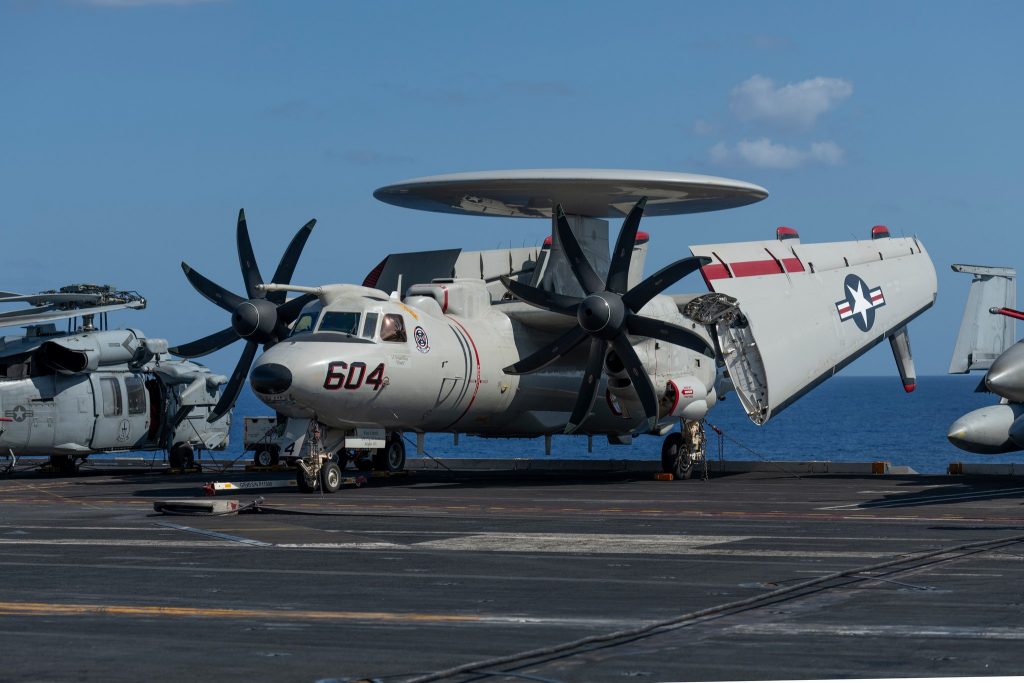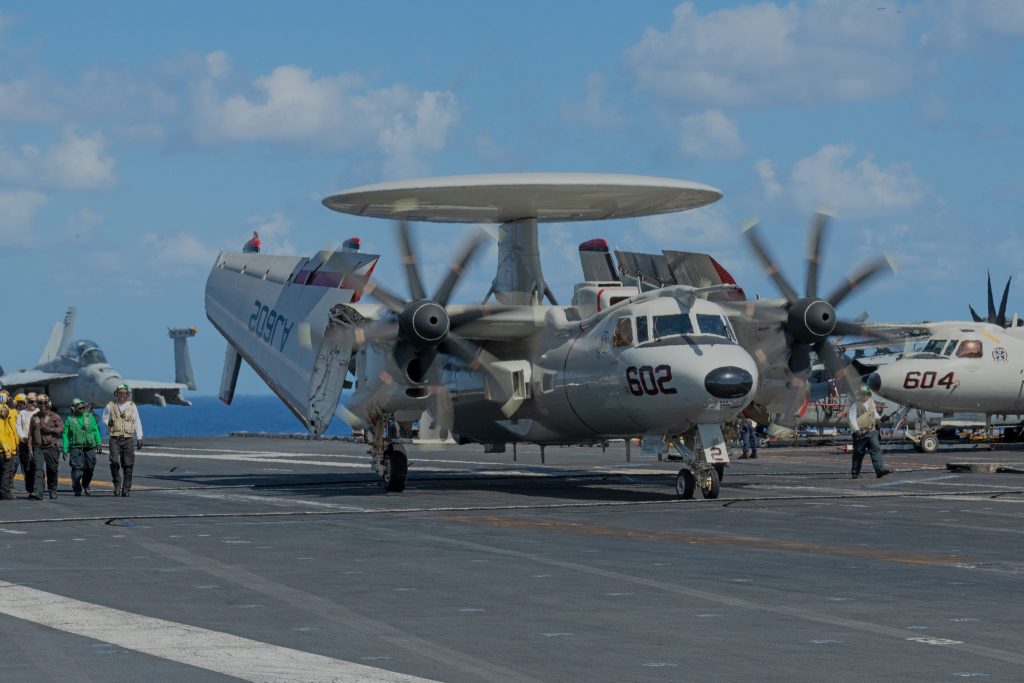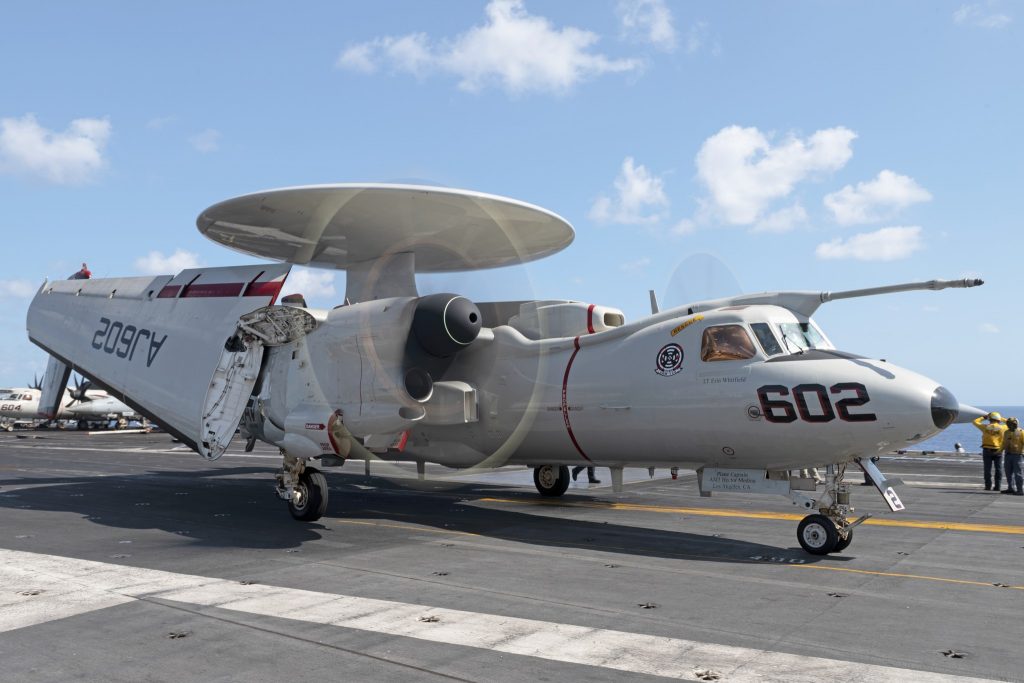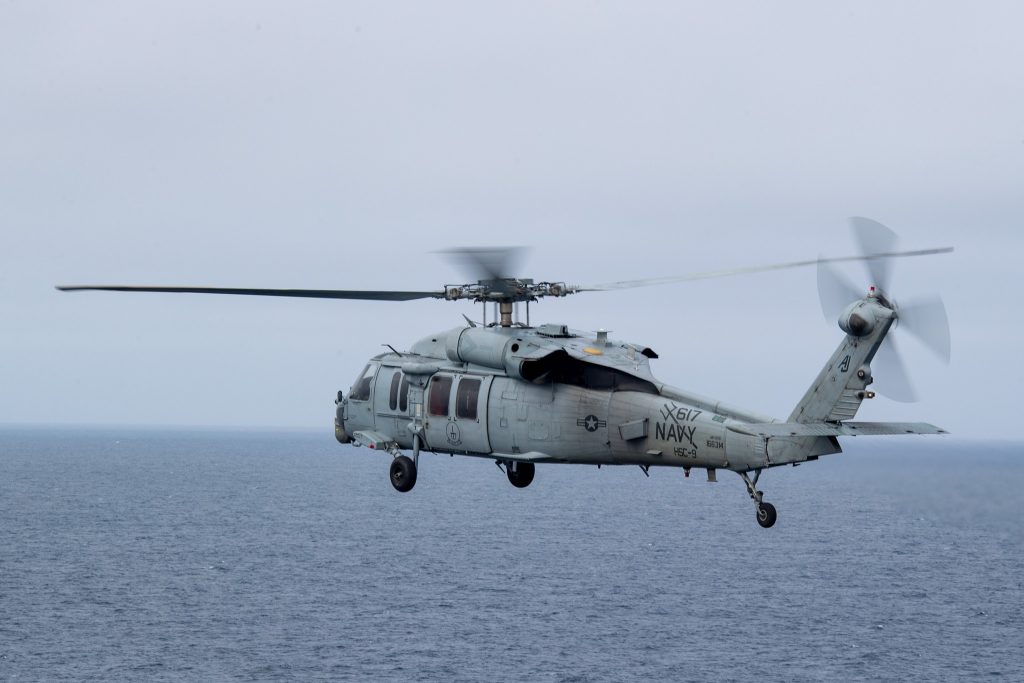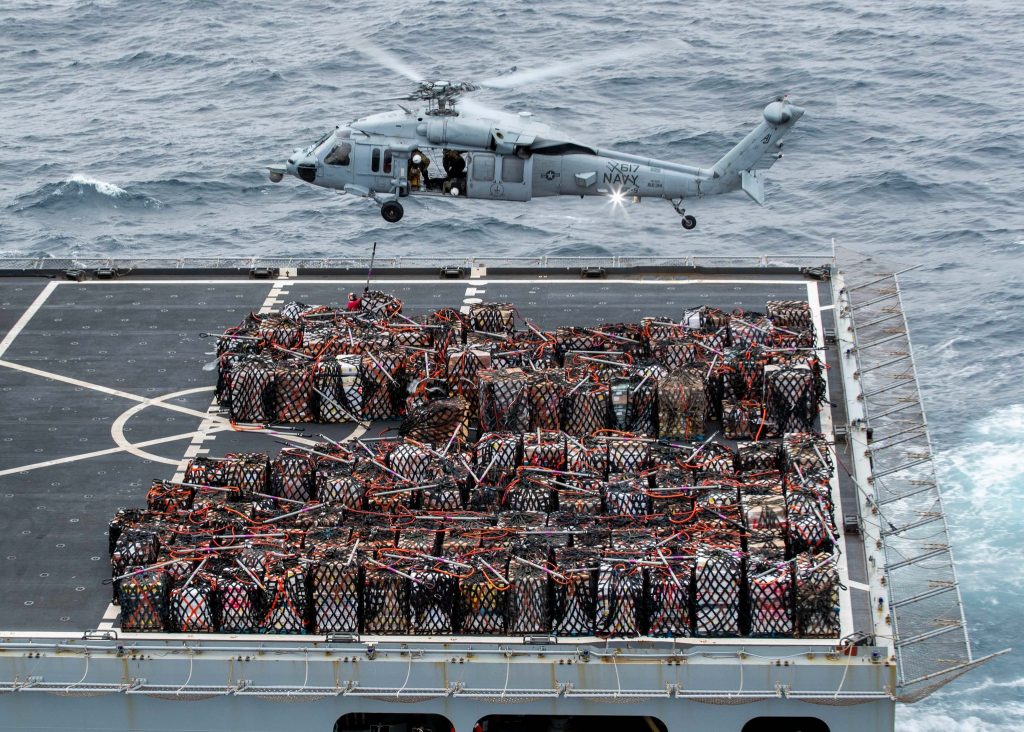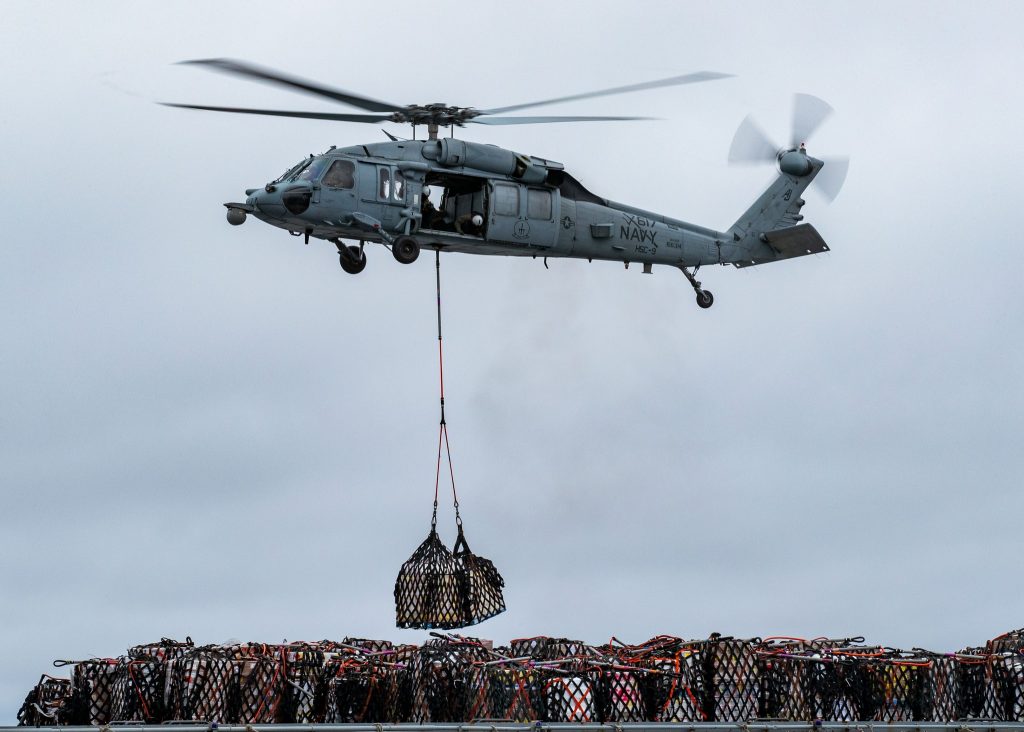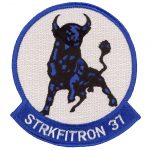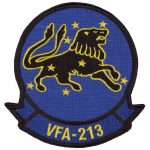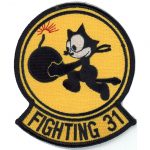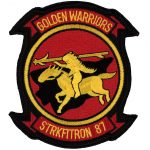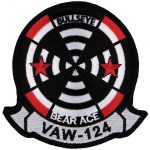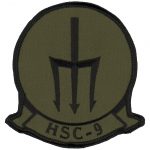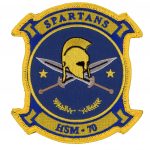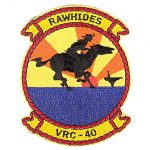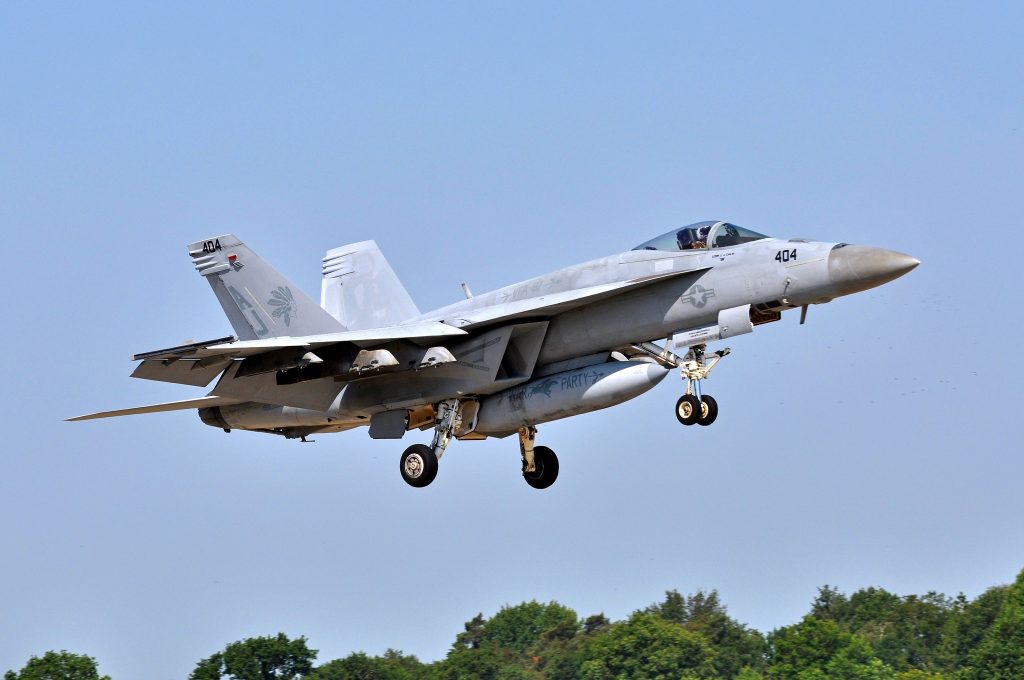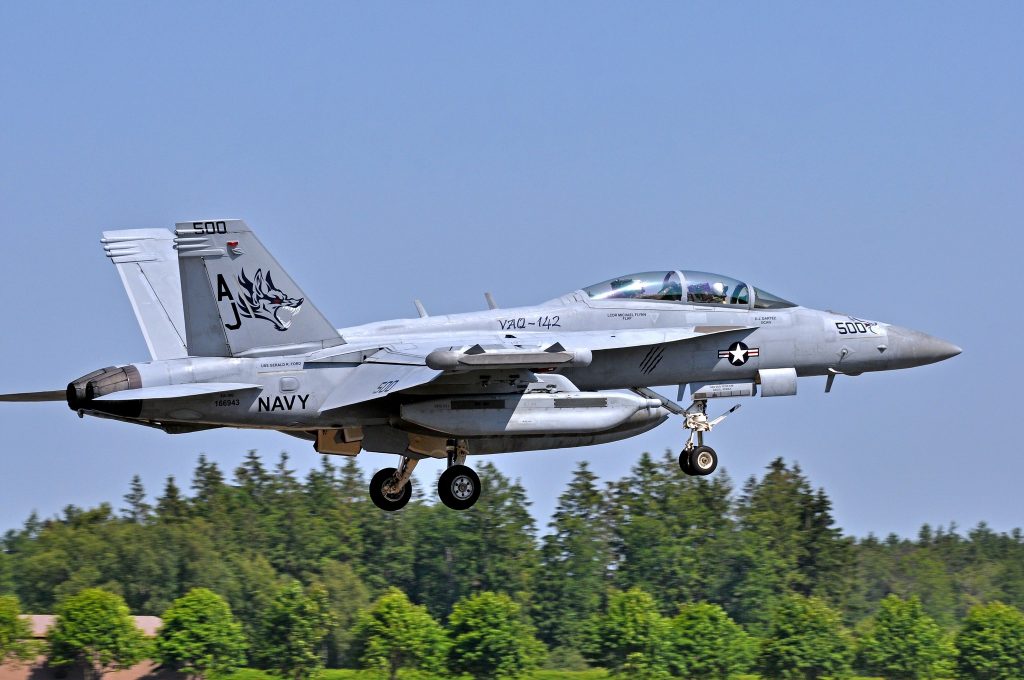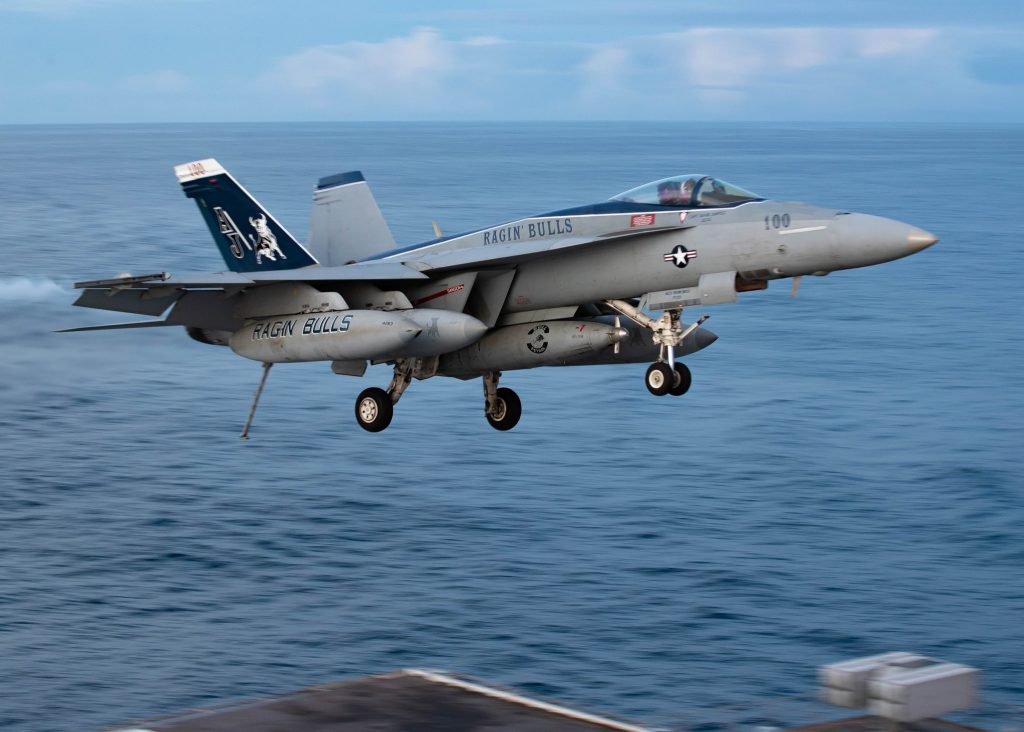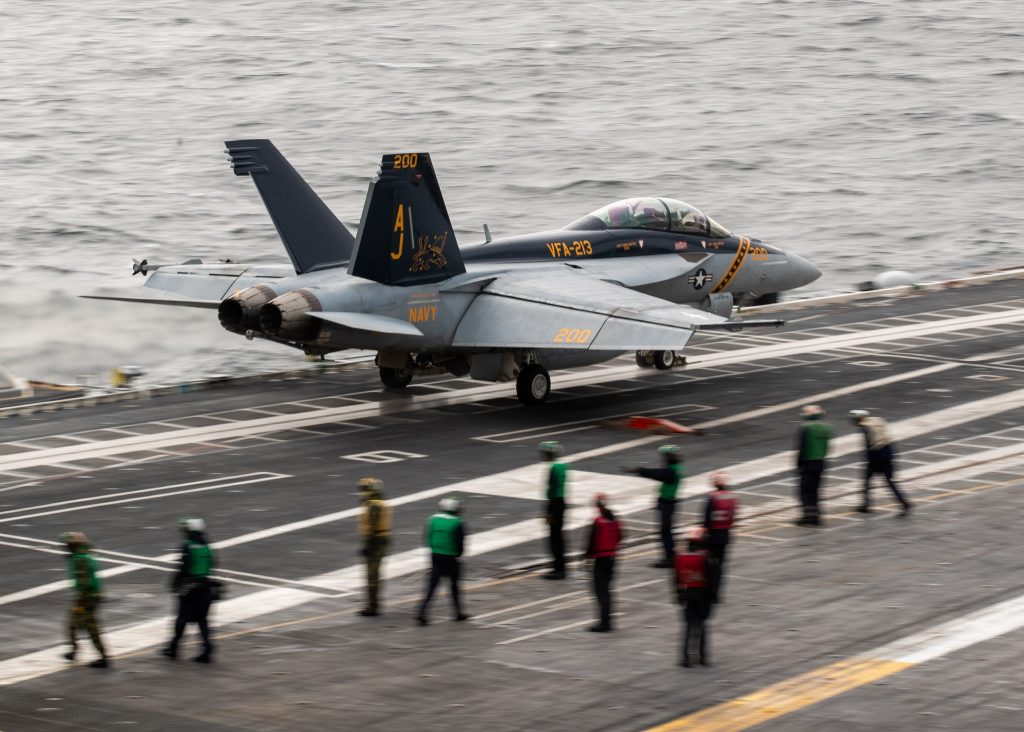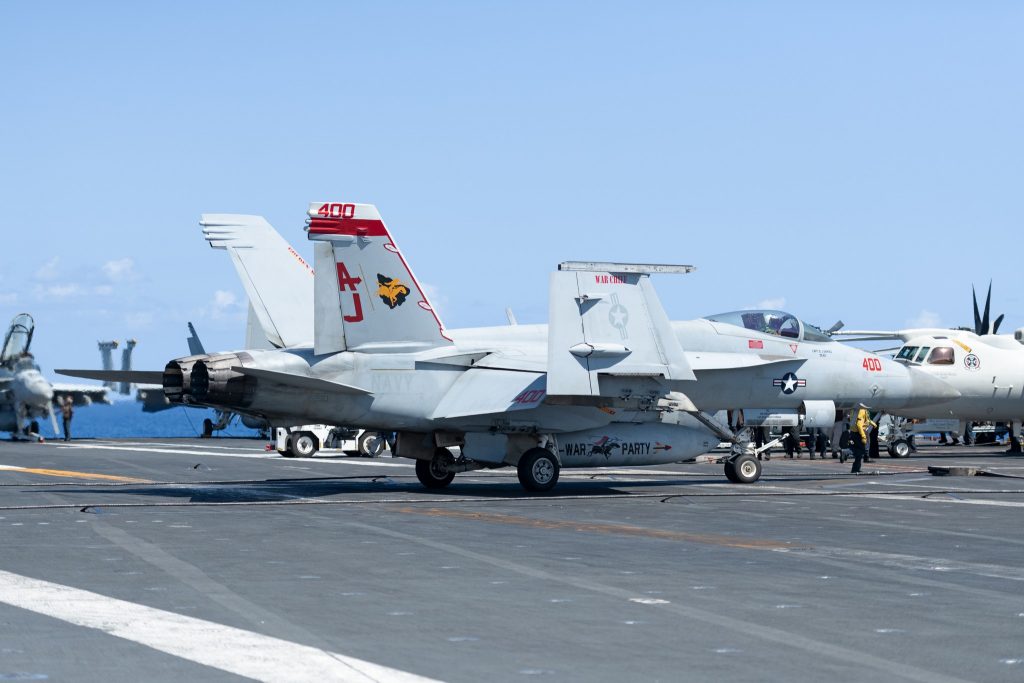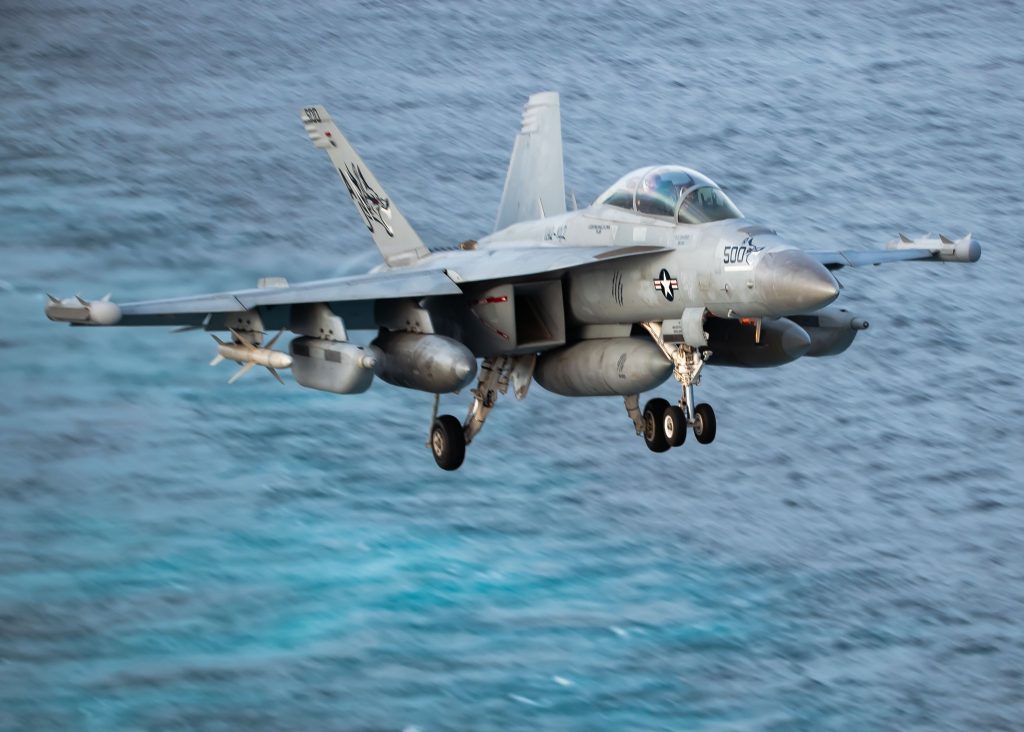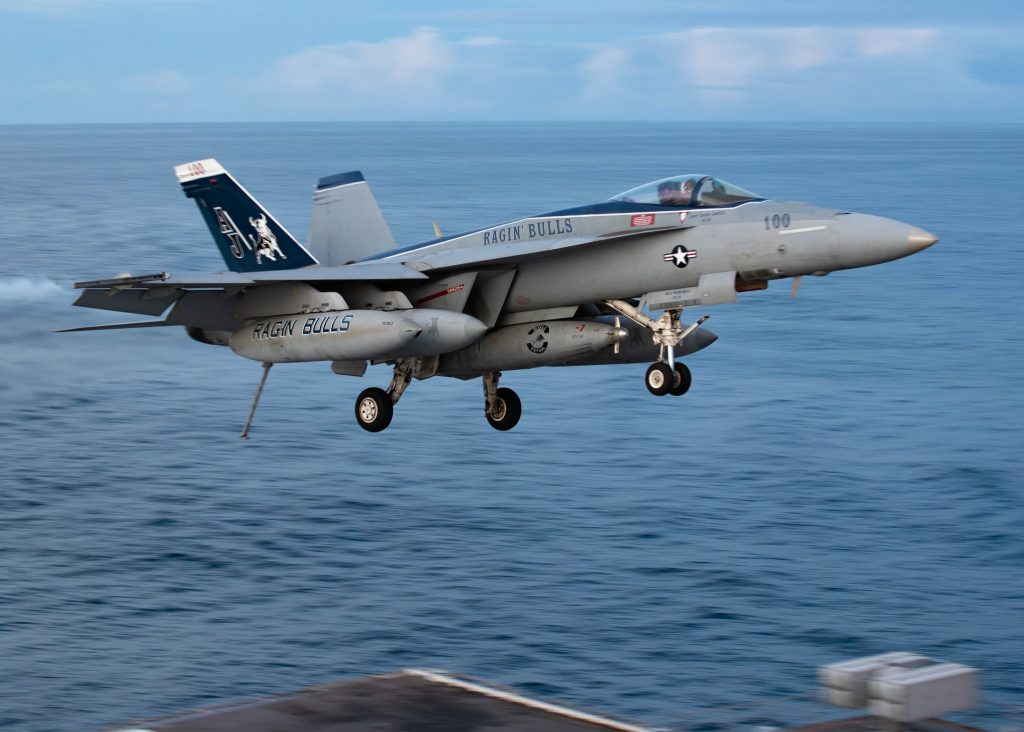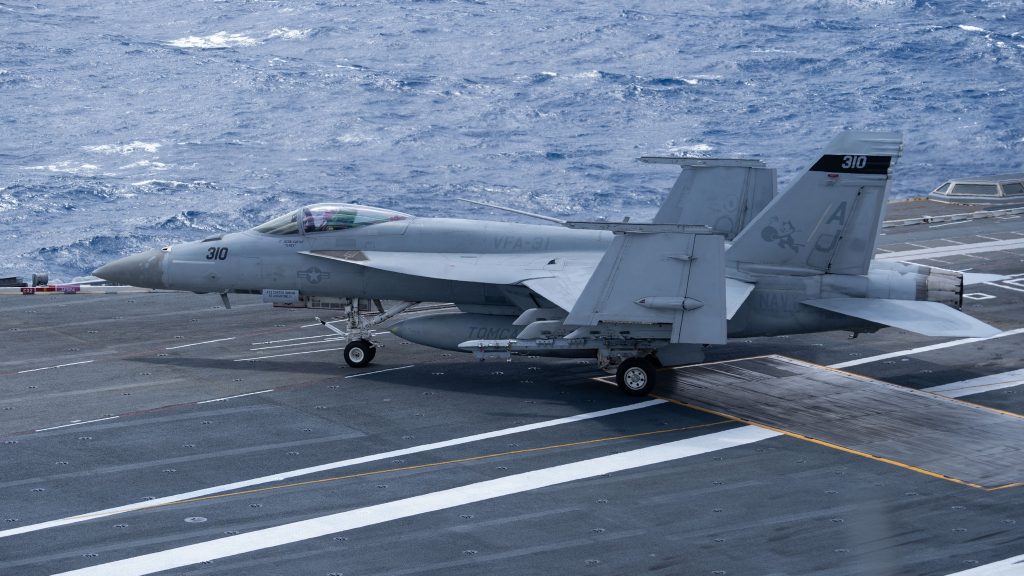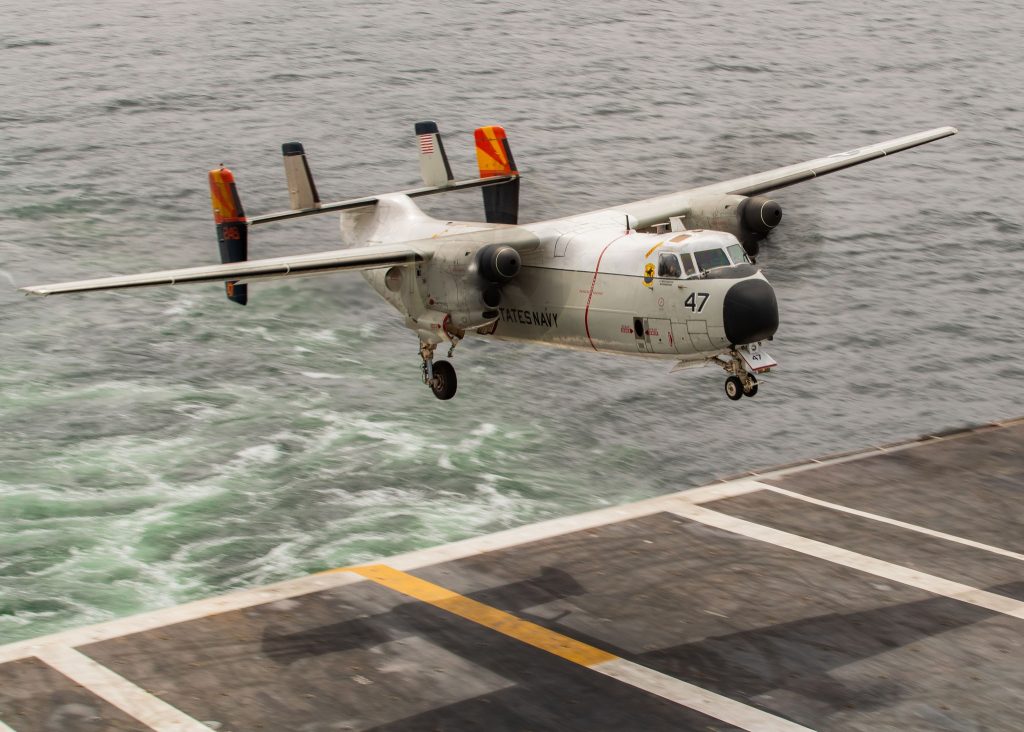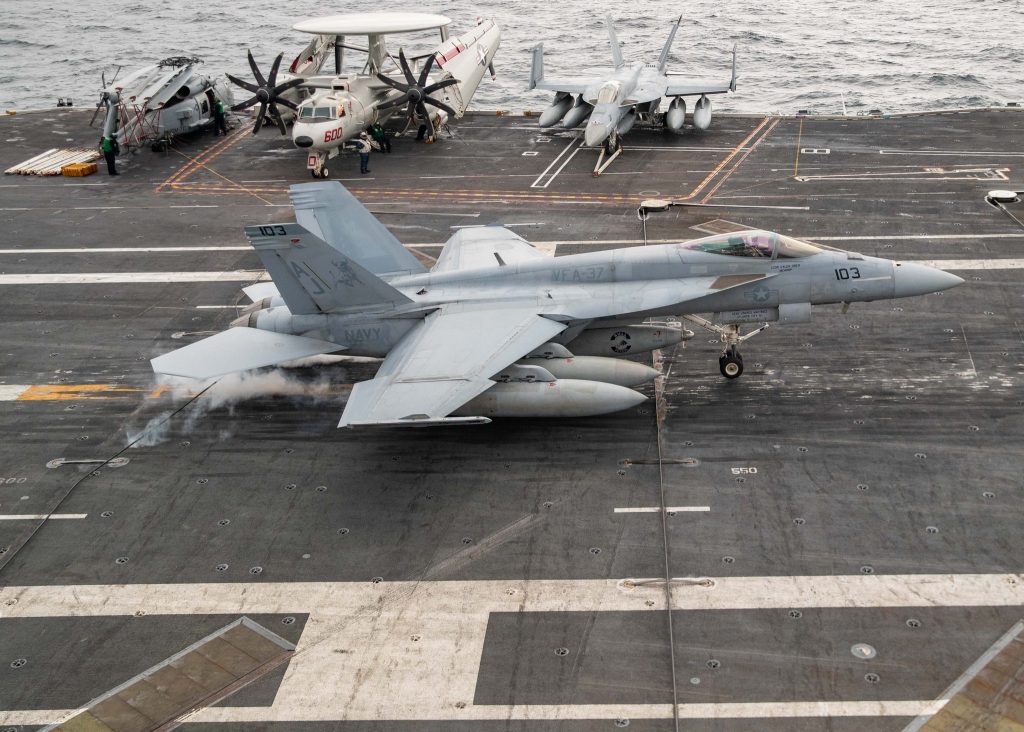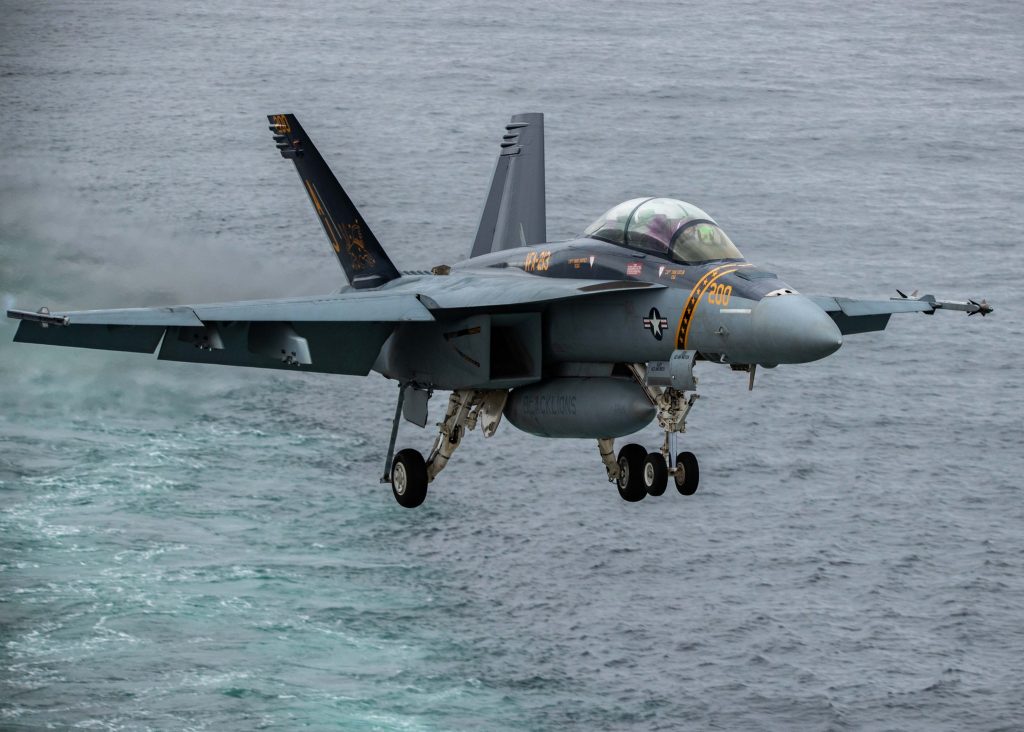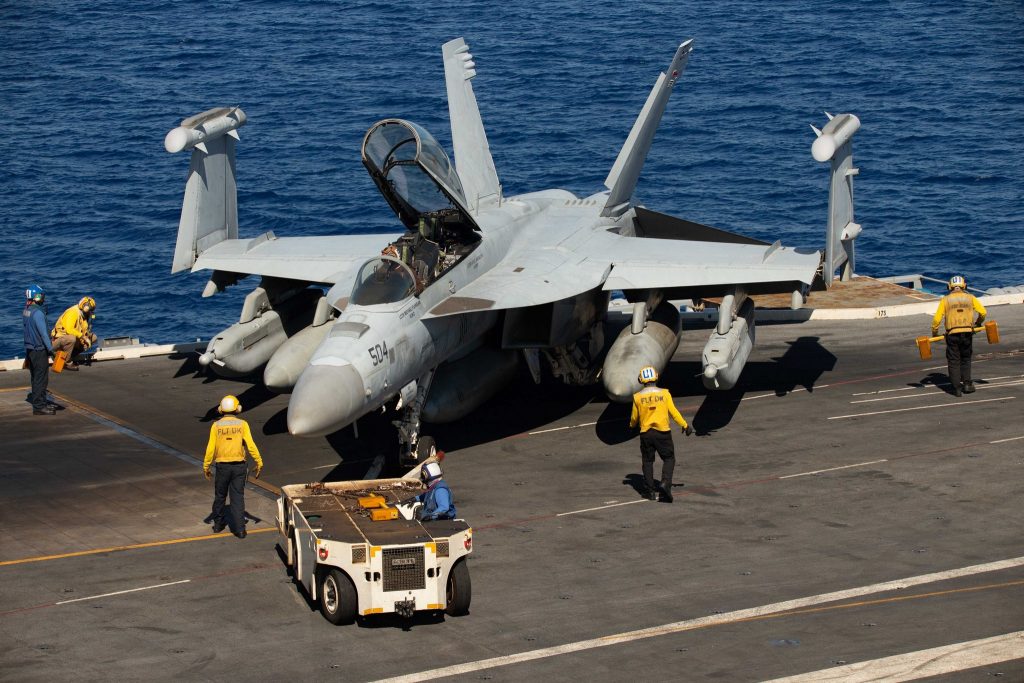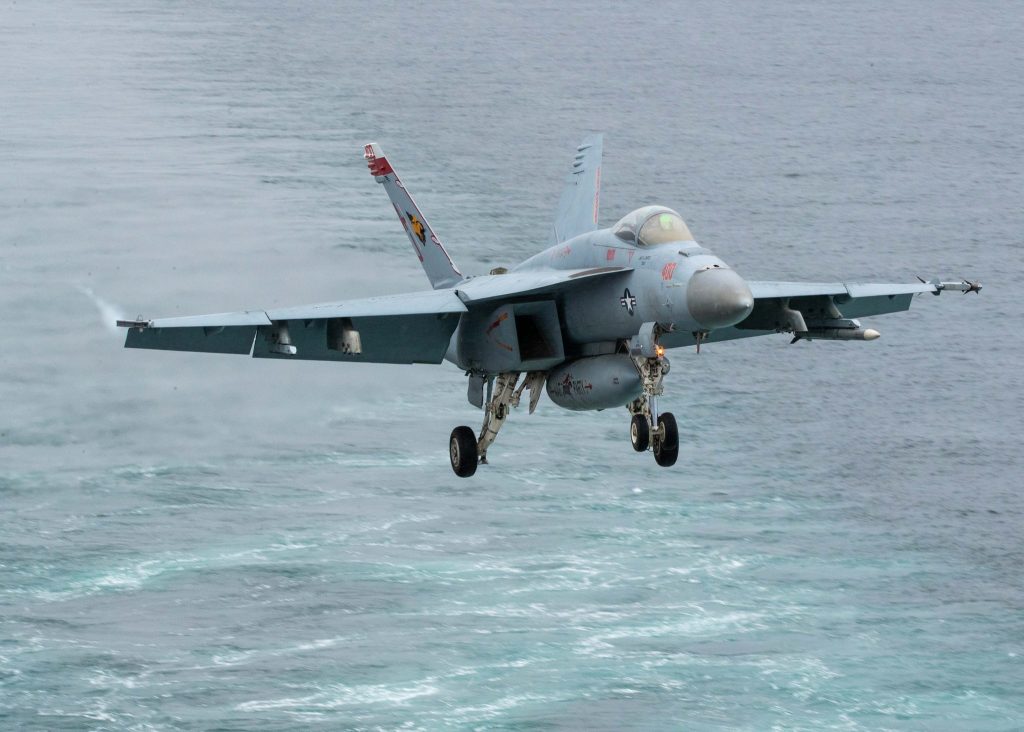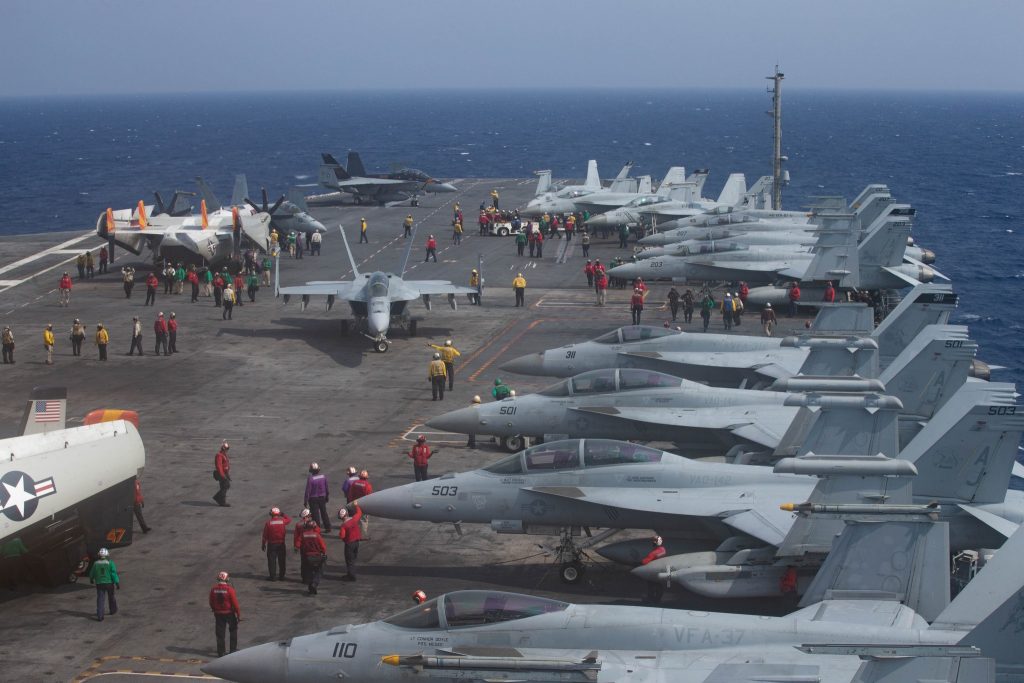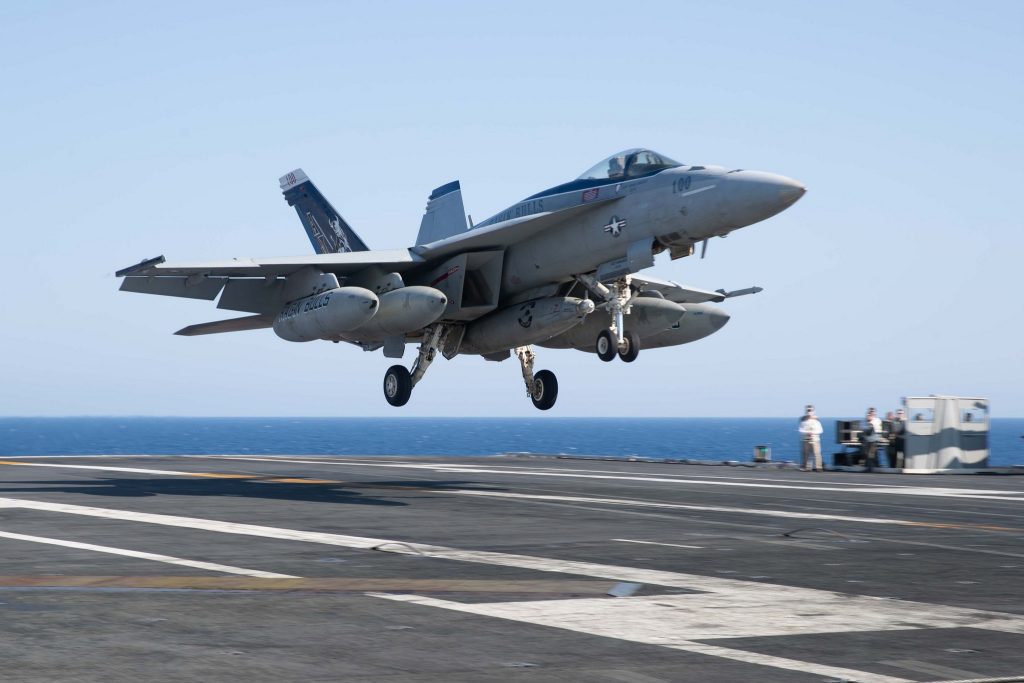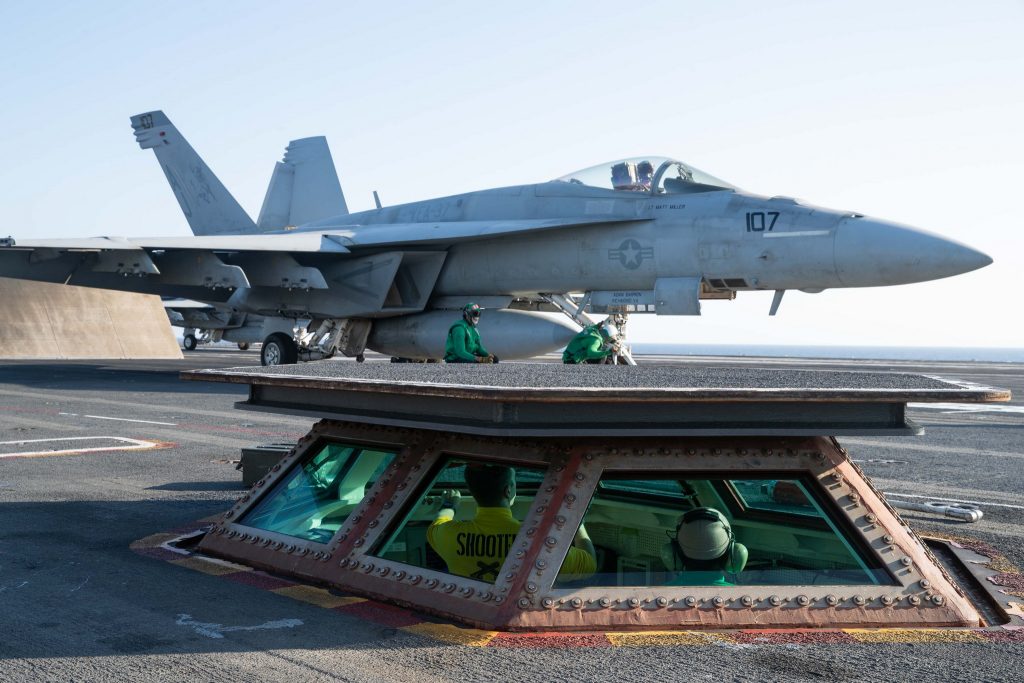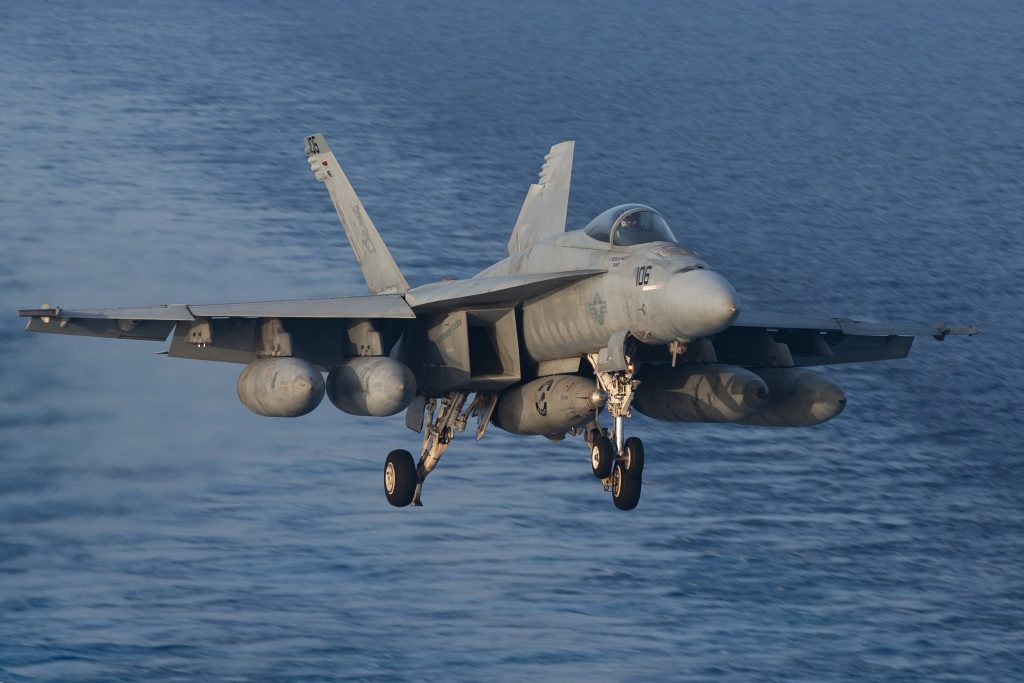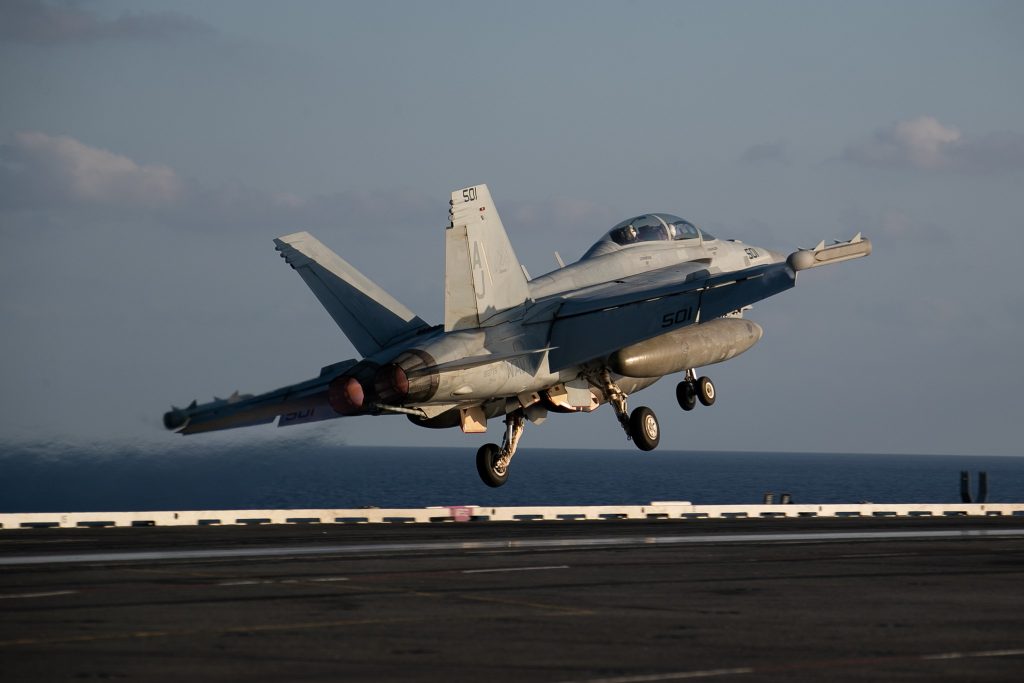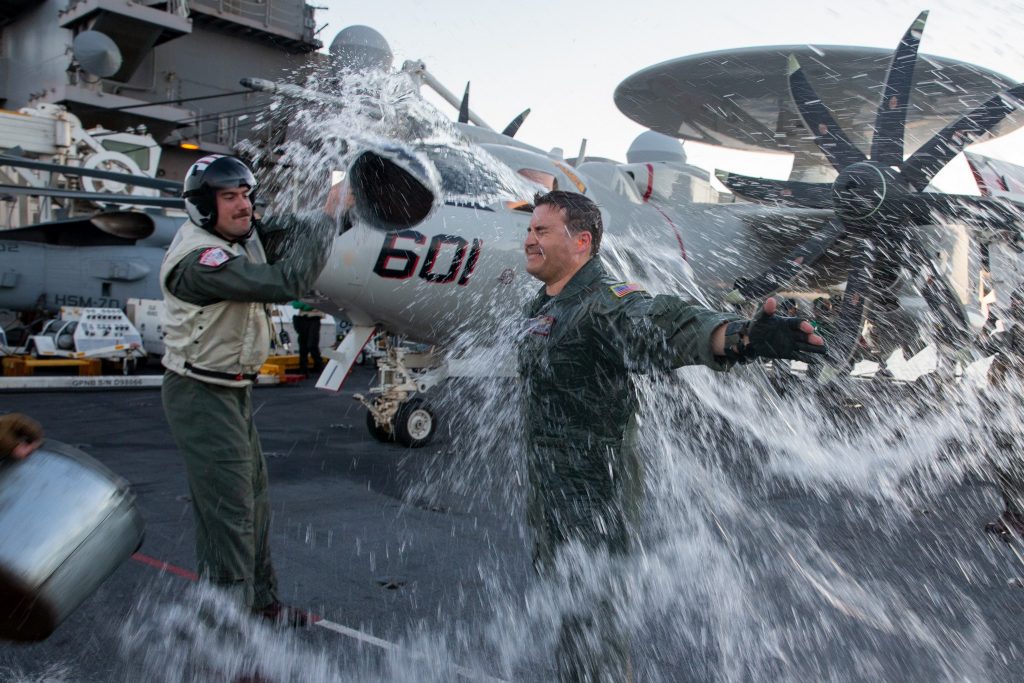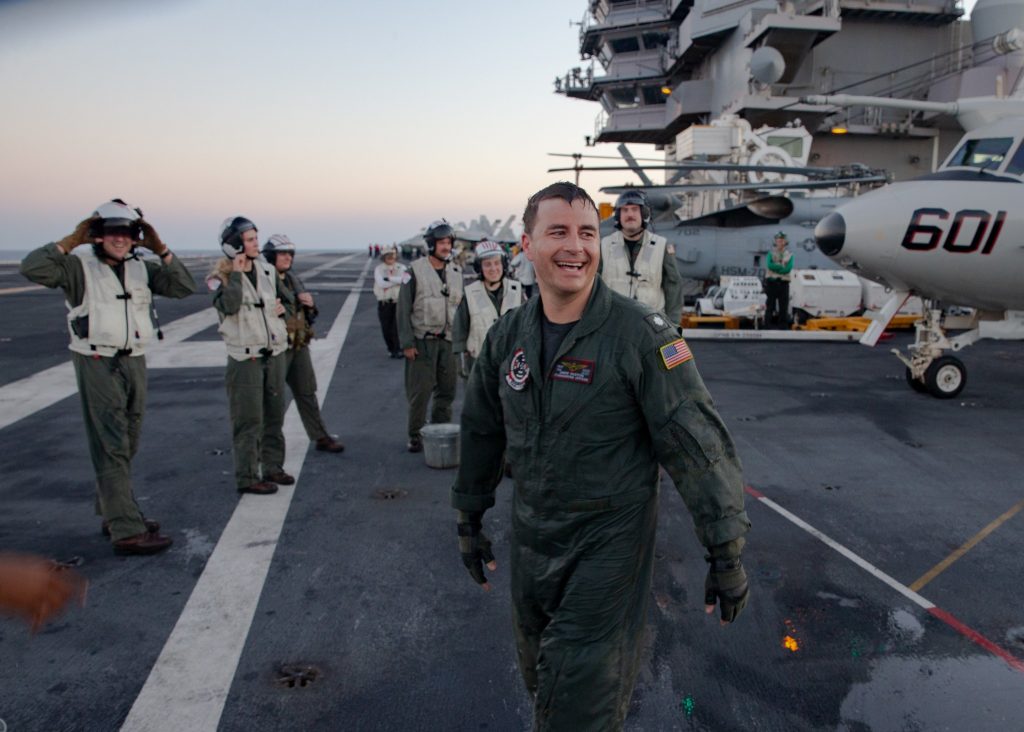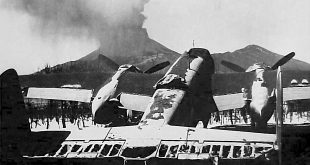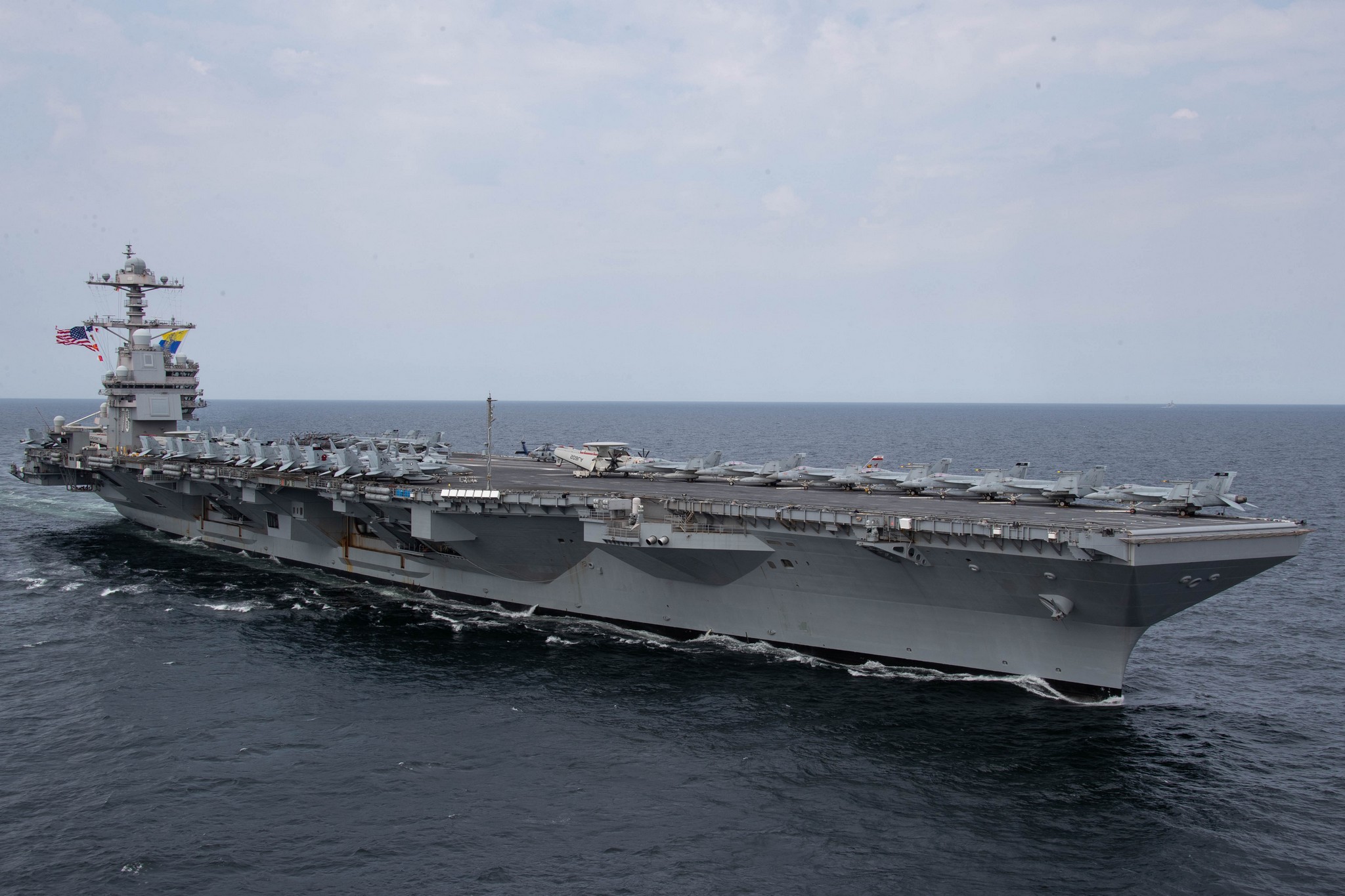
Photos: Angelo Romano, Patrick Roegies and U.S. Navy
On 7 Aug 2023, our correspondent Angelo Romano, visited USS Gerald R. Ford (CVN 78), during a media embark, off the eastern coast of Sicily, Italy. Angelo flew out of NAS Sigonella onboard a VRC-40 DET 2 C-2A NP and made the eleventh arrested landing in his 37-years career as freelance historian and photographer.
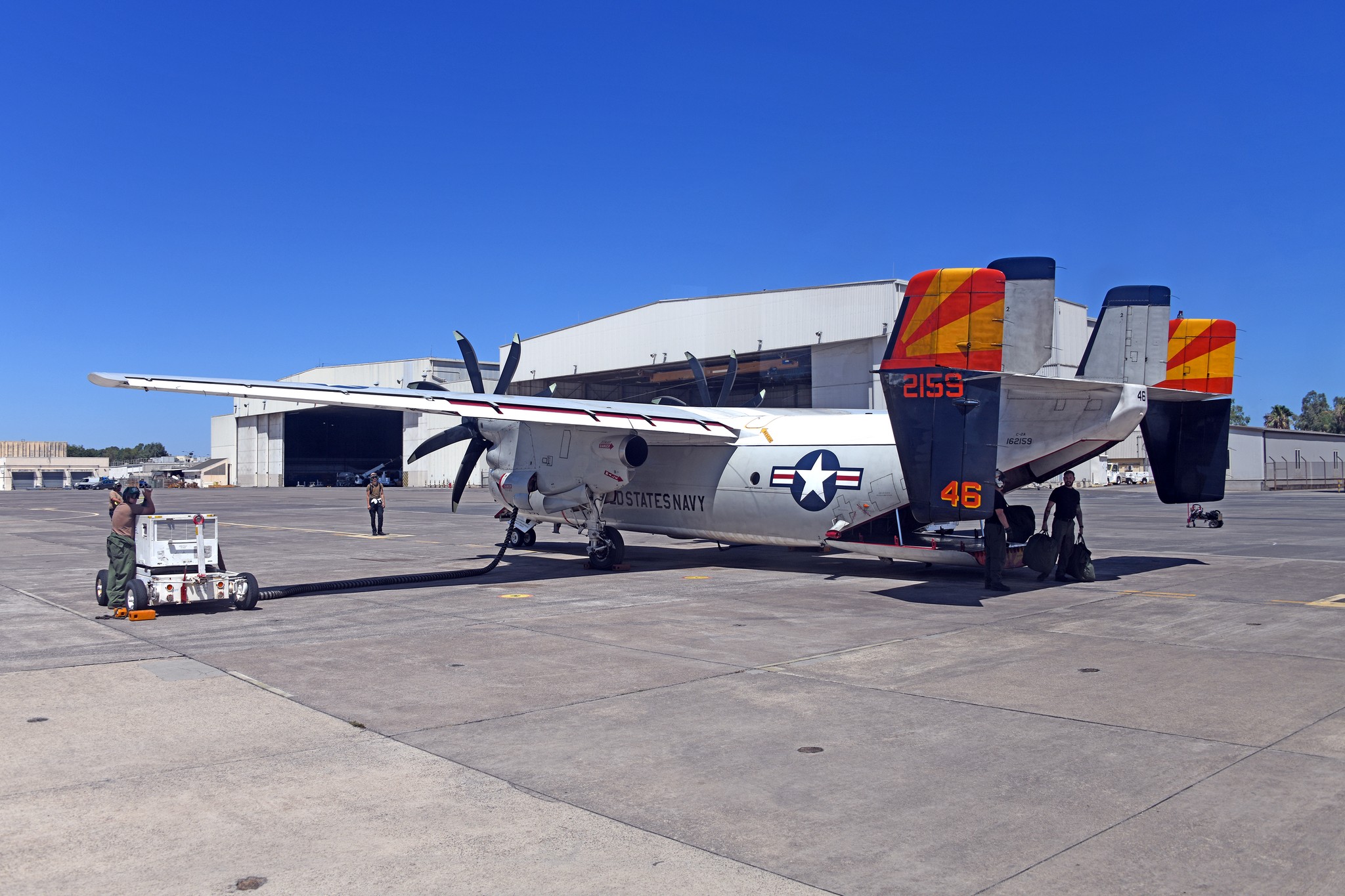
Angelo flew out of NAS Sigonella onboard the VRC-40 DET 2 C-2A NP 162159/(CD)46 (Angelo Romano photo)
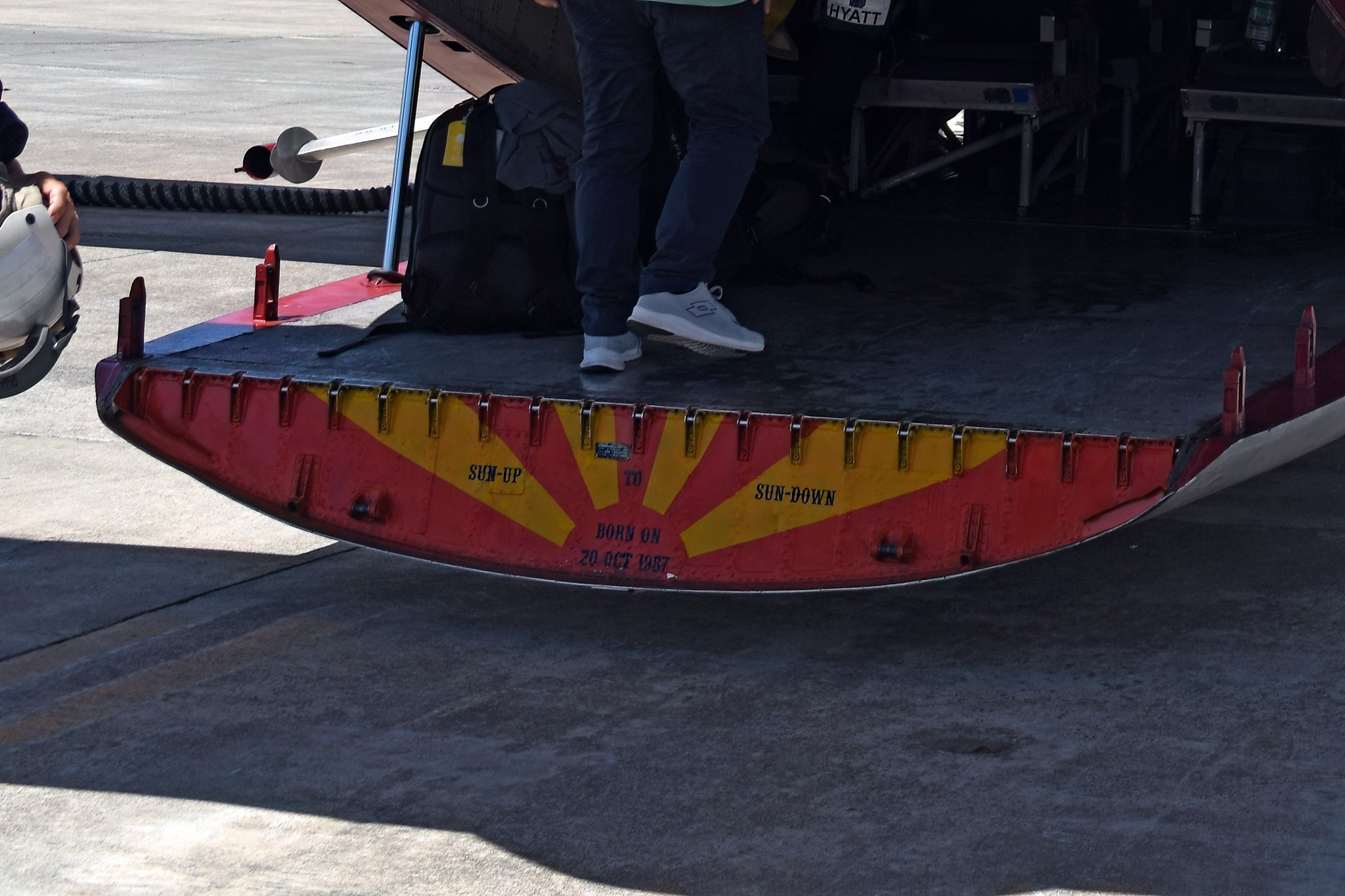
Close-up of the aft ramp edge of C-2A NP 162159 (originally delivered on 20 October 1987) with reference to the SUNUP (establishment) and upcoming SUNDOWN (disestablishment) of VRC-40 (Angelo Romano photo)
The capital ship of the Gerald R. Ford Carrier Strike Group (GRFCSG), the first-in-class aircraft carrier USS Gerald R. Ford (CVN 78), departed her home port Naval Station Norfolk, Virginia, for a routine deployment, on May 2.
“This strike group is the cornerstone of our Navy’s forward operations, capable of meeting any tasking provided by regional combatant commanders to ensure peace and stability at sea,” said Rear Adm. Greg Huffman, Commander, Carrier Strike Group 12. “Our presence at sea throughout the deployment will provide reassurance to our partners and Allies that sea lanes will remain open, and our joint operations will demonstrate our commitment to interoperability and maritime stability.”
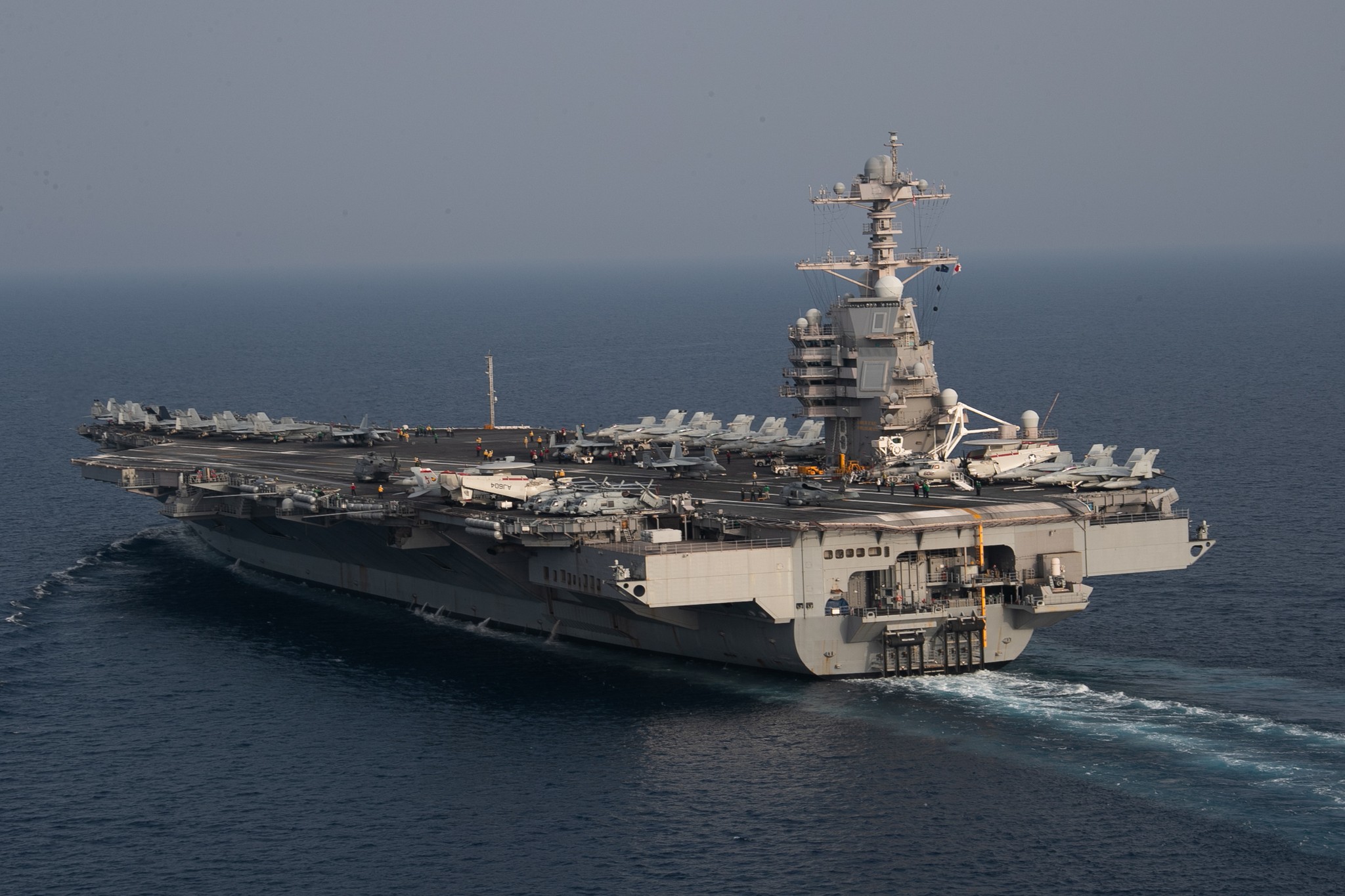
Ford’s second deployment marks the flagship’s first combat deployment, following its two-month deployment to the U.S. SECOND and SIXTH Fleet areas of operation in autumn 2022. “The Sailors of Gerald R. Ford are ready and able to perform because of the strenuous training they have put in to get this ship ready to deploy, and also in large part to the support of their families and friends,” said Capt. Rick Burgess, Ford’s commanding officer. “This ship and crew are actively reshaping the face of our Navy’s capabilities and strengthening the future of Naval Aviation.”
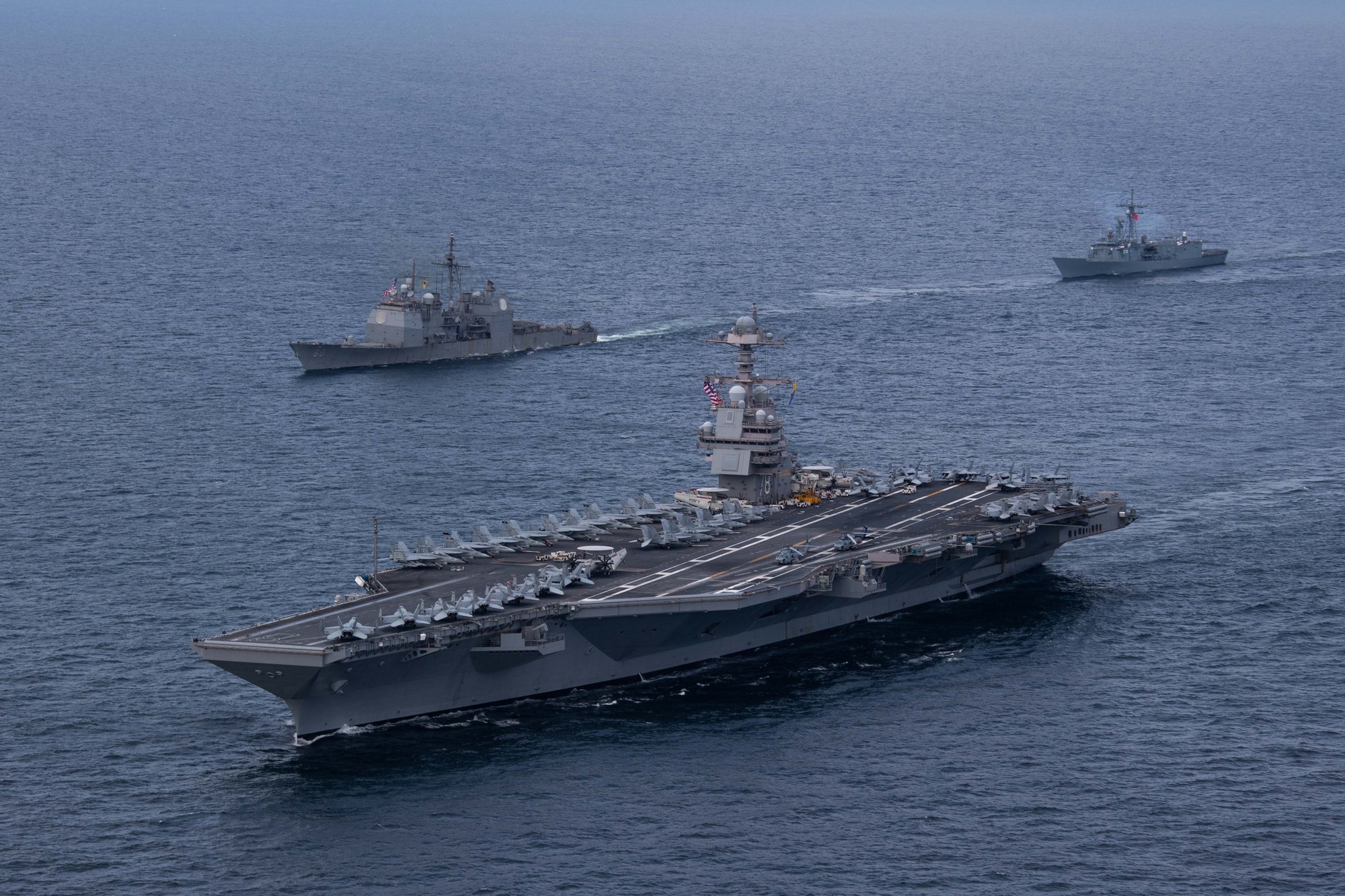
The GRFCSG provides an inherently flexible naval force capable of deploying across combatant commands to meet emerging missions, deter potential adversaries, reassure allies and partners, enhance security and guarantee the free flow of global commerce.
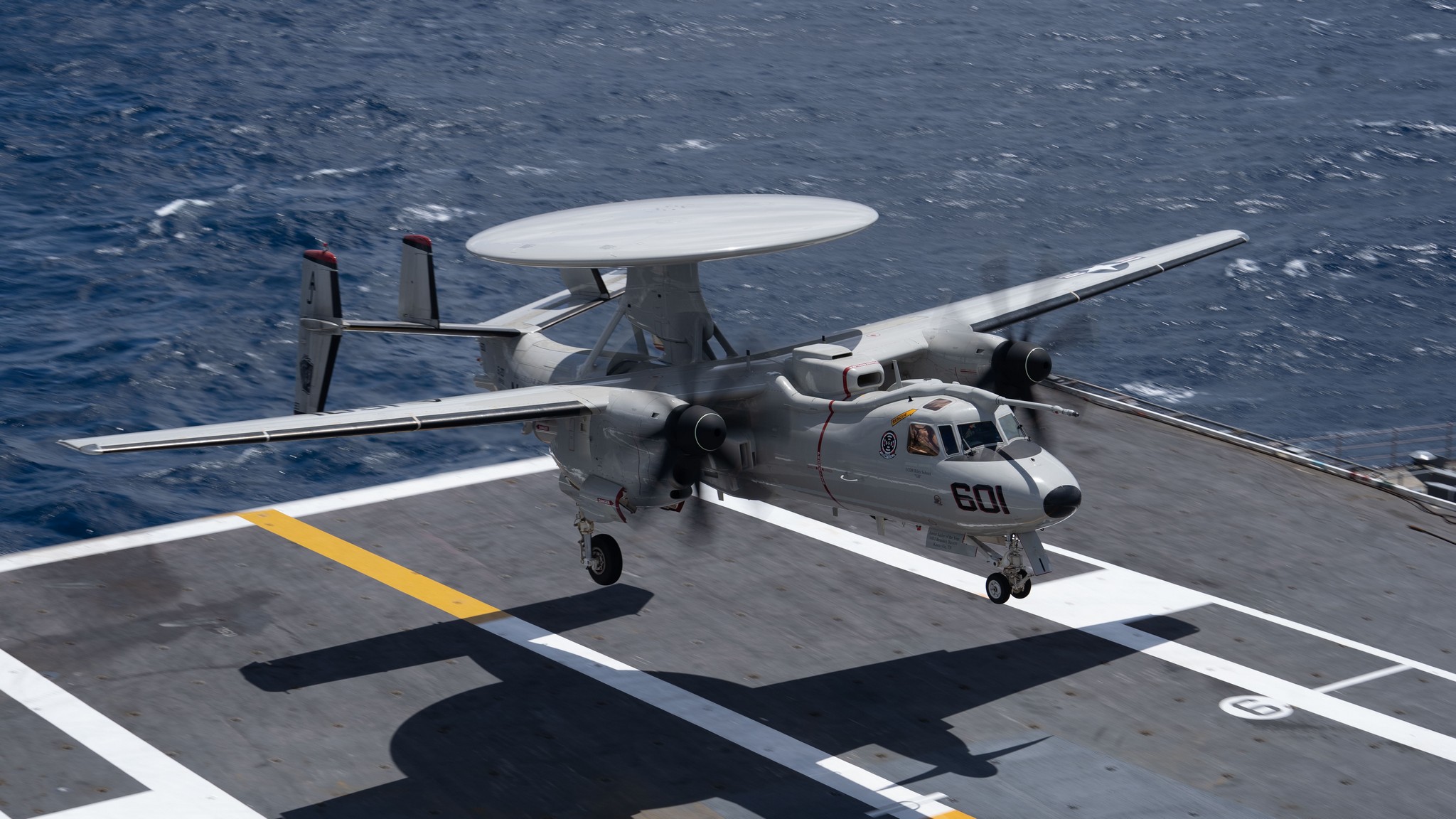
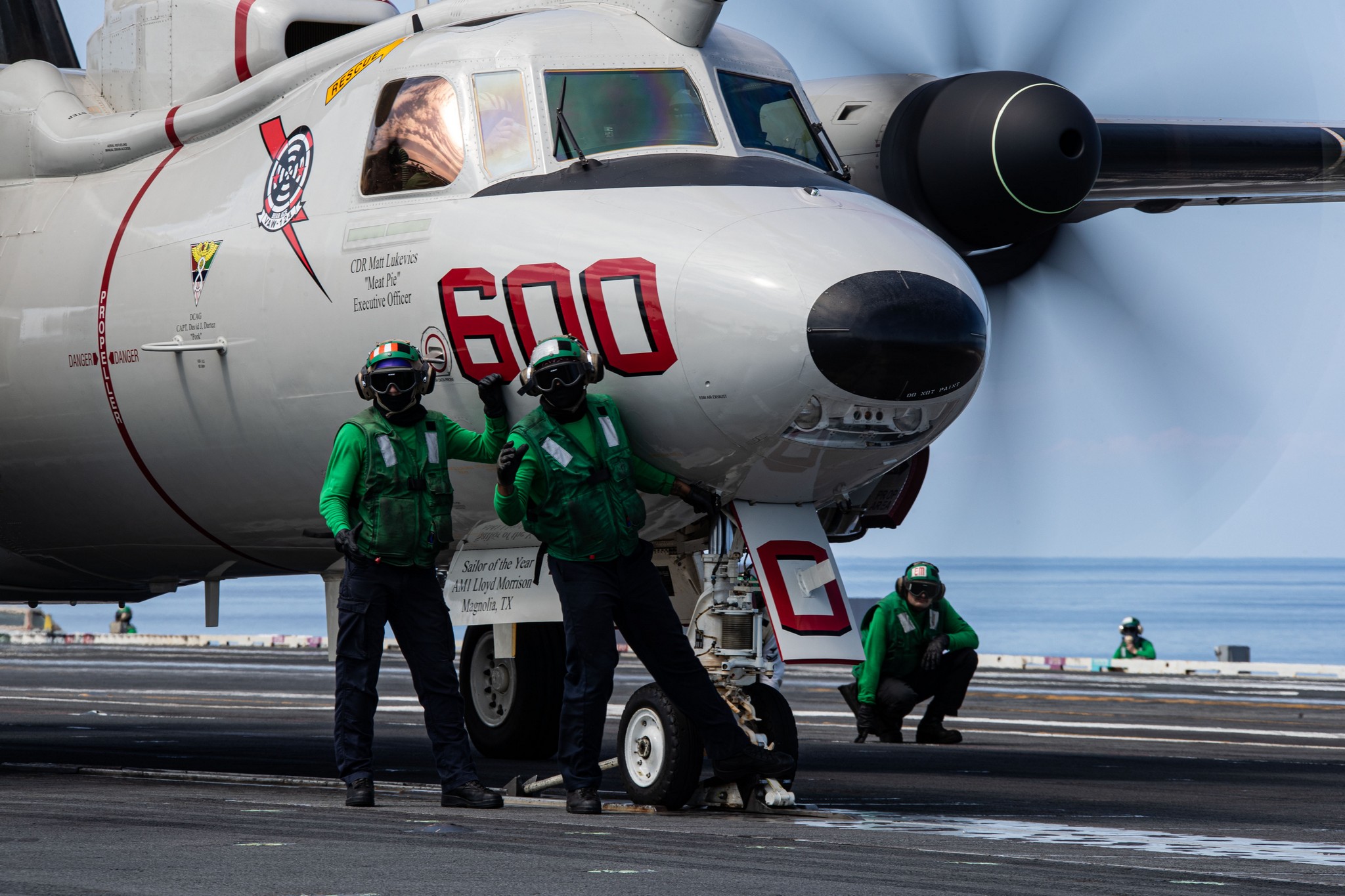
The GRFCSG consists of Carrier Strike Group (CSG) 12 staff, Gerald R. Ford, Carrier Air Wing (CVW) 8, Destroyer Squadron (DESRON) 2 staff and units, Ticonderoga-class guided-missile cruiser USS Normandy (CG 60) and the Information Warfare Commander. In total, the GRFCSG deploys with more than 6,000 Sailors across all platforms ready to respond globally to combatant commander’s tasking.
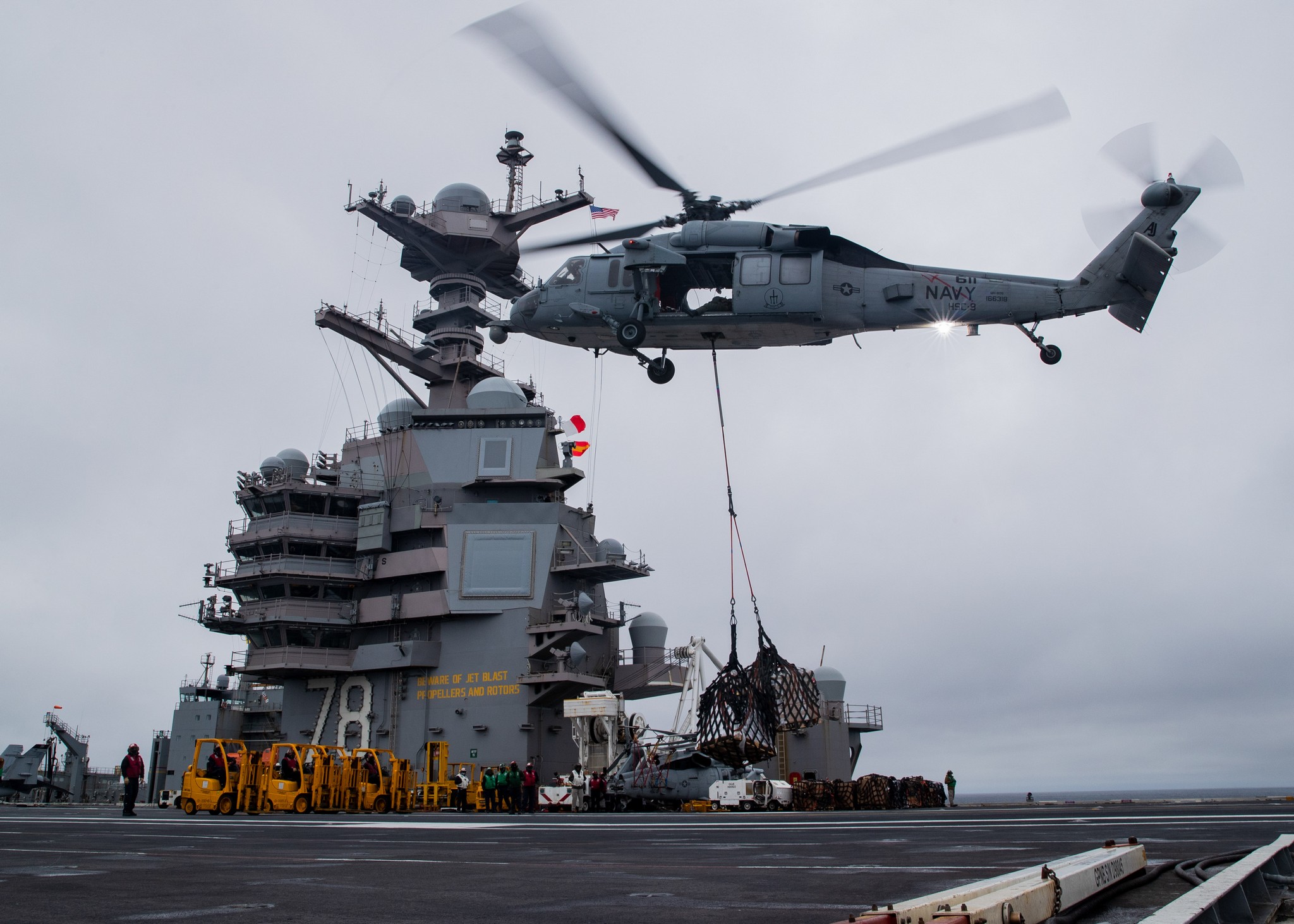
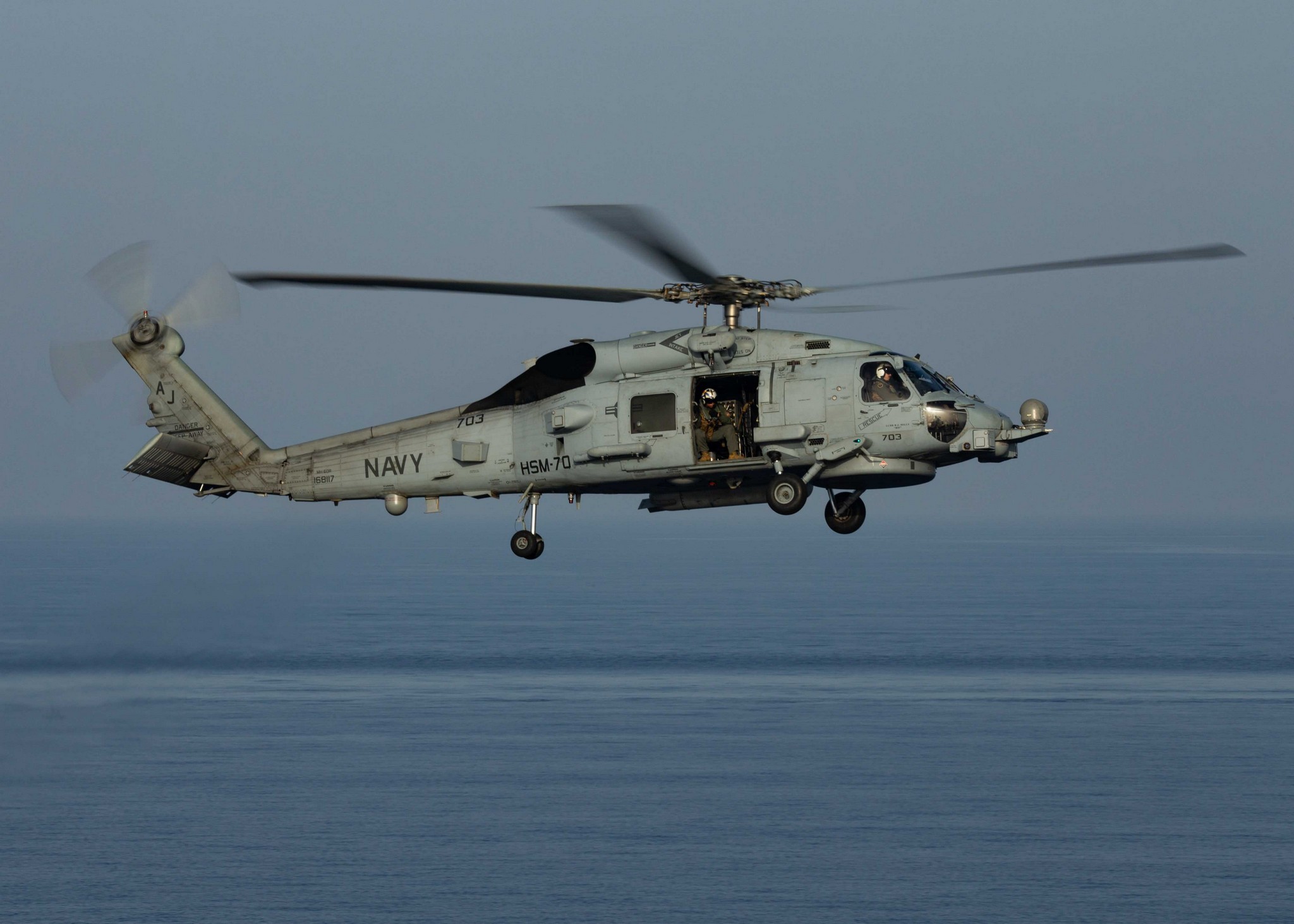
The ships of DESRON 2 are the Arleigh Burke-class guided missile destroyers USS Ramage (DDG 61), USS McFaul (DDG 74) and USS Thomas Hudner (DDG 116).
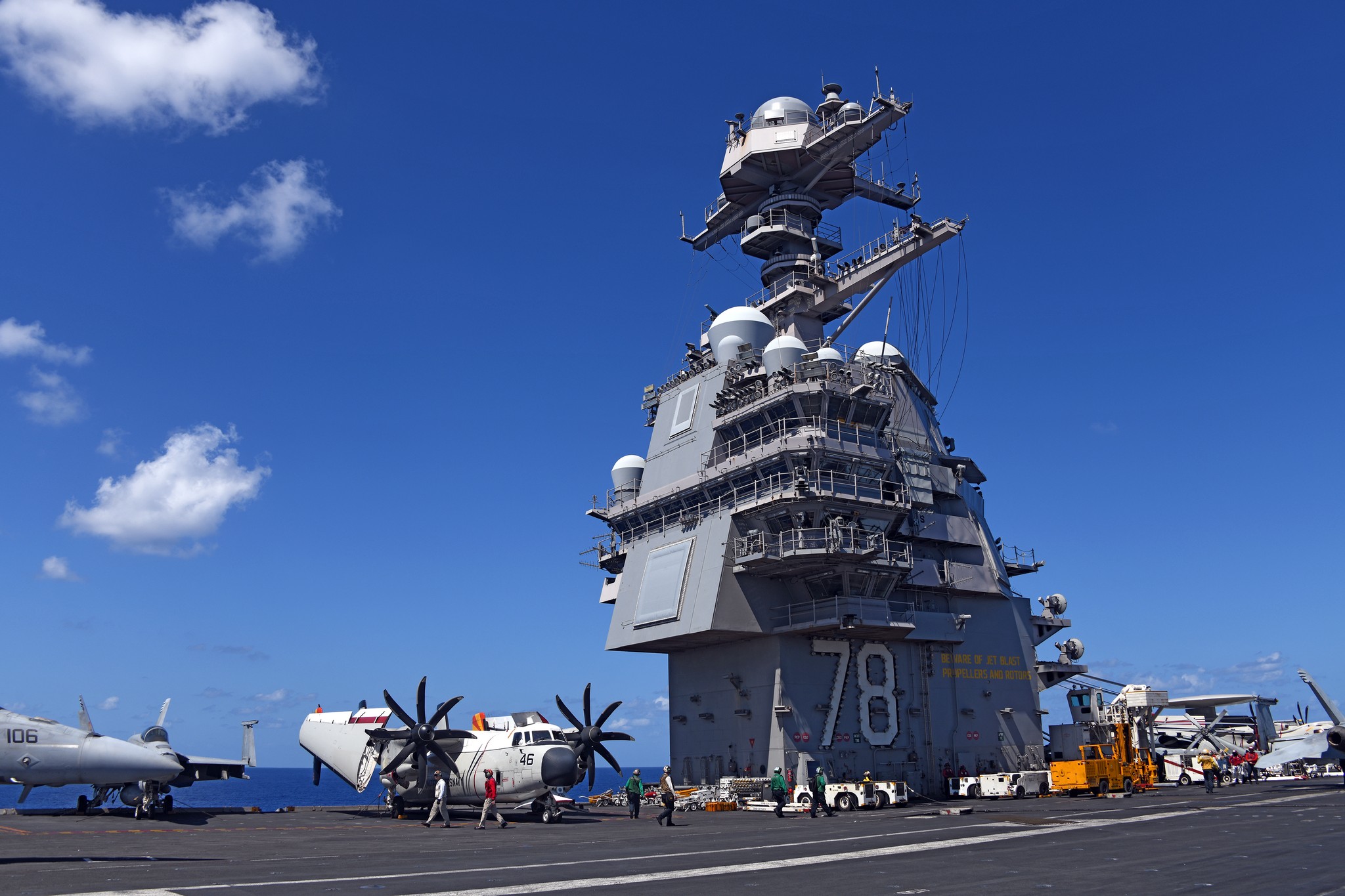
The squadrons of Carrier Air Wing EIGHT (CVW-8) embarked aboard Gerald R. Ford are:
| VFA-37 | BULLS | FA-18E | AJ100 | Strike Fighter Squadron (VFA) 37 |
| VFA-213 | BLACK LIONS | FA-18F | AJ200 | Strike Fighter Squadron (VFA) 213 |
| VFA-31 | TOMCATTERS | FA-18E | AJ300 | Strike Fighter Squadron (VFA) 31 |
| VFA-87 | GOLDEN WARRIORS | FA-18E | AJ400 | Strike Fighter Squadron (VFA) 87 |
| VAQ-142 | GRAY WOLVES | EA-18G | AJ500 | Electronic Attack Squadron (VAQ) 142 |
| VAW-124 | BEAR ACES | E-2D | AJ600 | Airborne Command and Control Squadron (VAW) 124 |
| HSC-9 | TRIDENTS | MH-60S | AJ610 | Helicopter Sea Combat Squadron (HSC) 9 |
| HSM-70 | SPARTANS | MH-60R | AJ700 | Helicopter Maritime Strike Squadron (HSM) 70 |
| VRC-40 DET 2 | RAWHIDES | C-2A NP | (CD)41/46 | Fleet Logistics Support Squadron (VRC) 40 |
Ford is the U.S. Navy’s newest and most advanced aircraft carrier. As the first-in-class ship of Ford-class aircraft carriers, CVN-78 represents a generational leap in the U.S. Navy’s capacity to project power on a global scale. Ford-class aircraft carriers introduce 23 new technologies, including Electromagnetic Aircraft Launch System, Advanced Arresting Gear and Advanced Weapons Elevators. The new systems incorporated onto Ford-class ships are designed to generate a higher sortie rate with a 20 percent smaller crew than a Nimitz Class carrier, paving the way forward for Naval Aviation.
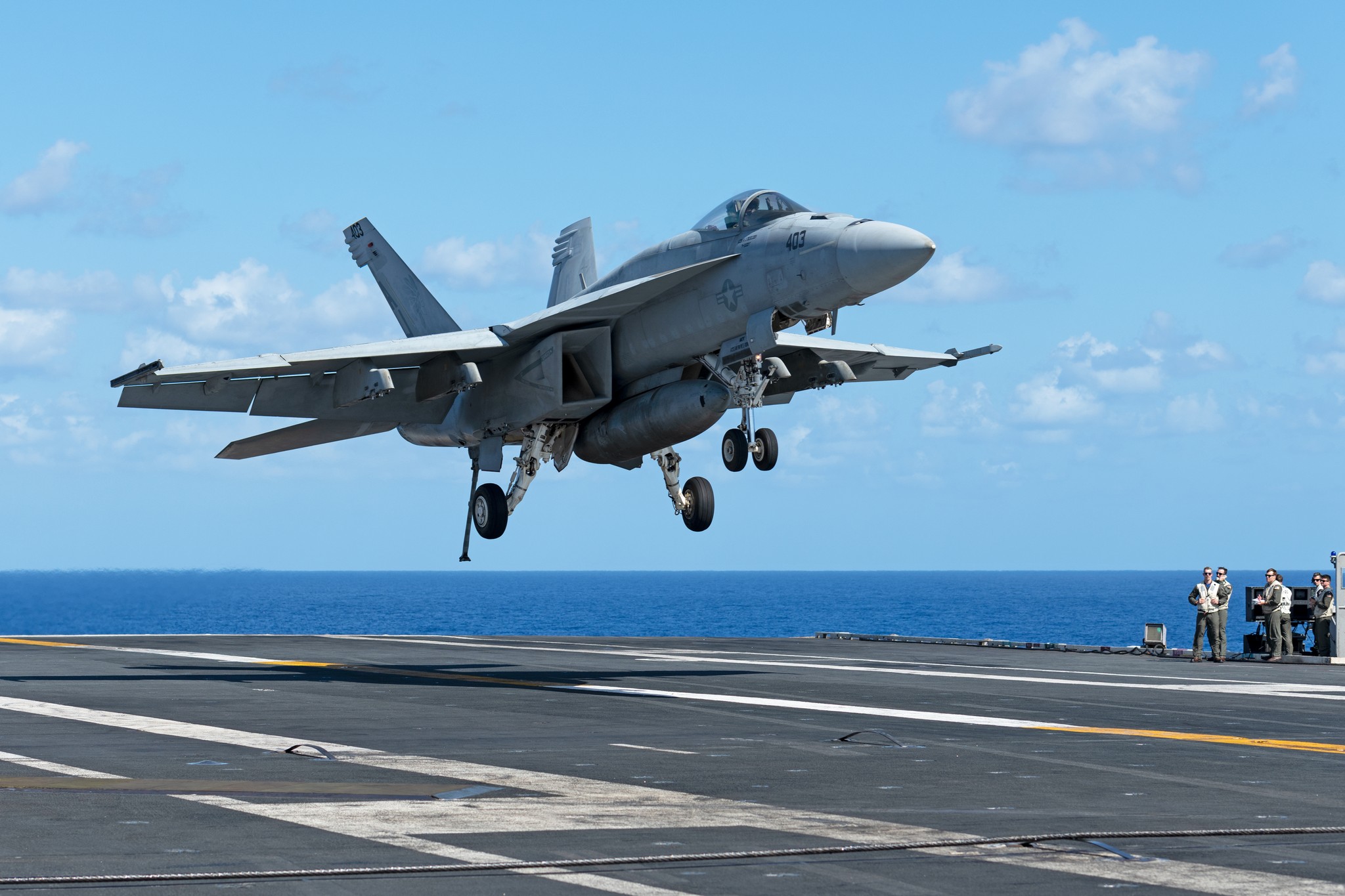
FA-18E 169075/ AJ-604 VFA-87 on landing (Patrick Roegies photo)
Cruise chronology (up to 18 Aug 2023)
- 02May2023, departed home port Naval Station Norfolk on her first global deployment;
- 02May-08May2023, Virginia Capes Operating Area ;
- 09May-l4May2023, Atlantic Ocean;
- 15May-20May2023, Eastern Atlantic Ocean;
- 21May-23May2023, North Sea;
- 24May2023, transited the Oslo fjord for its first port call in Oslo, Norway;
- 24May-28May2023, anchored off the south of Oslo, Norway;
- 29May-01Jun2023, North Sea;
- 02Jun-03Jun2023, Norwegian Sea;
- 04Jun-06Jun2023, Baltic Operations 2023 in the Norwegian Sea;
- 07Jun-10Jun2023, North Sea;
- 11Jun-12Jun2023, Celtic Sea;
- 12Jun-16Jun2023, U.S. Sixth Fleet (SIXTHFLT) and STRIKFORNATO-led BALTOPS 23 was the premier annual maritime-focused exercise uniting 19 NATO Allies and one NATO to provide complex training designed to strengthen the combined response capability critical to preserving the freedom of navigation and security in the Baltic Sea.
- 12Jun-23Jun2023 CVW-8 DET at Hohn Air Base, Germany, for the exercise Air Defender 2023 (AD23), the largest deployment exercise of air forces in NATO’s history: up to 10.000 exercise participants from 25 nations, with 250 aircraft, trained air operations in European airspace, under the command of the German Air Force
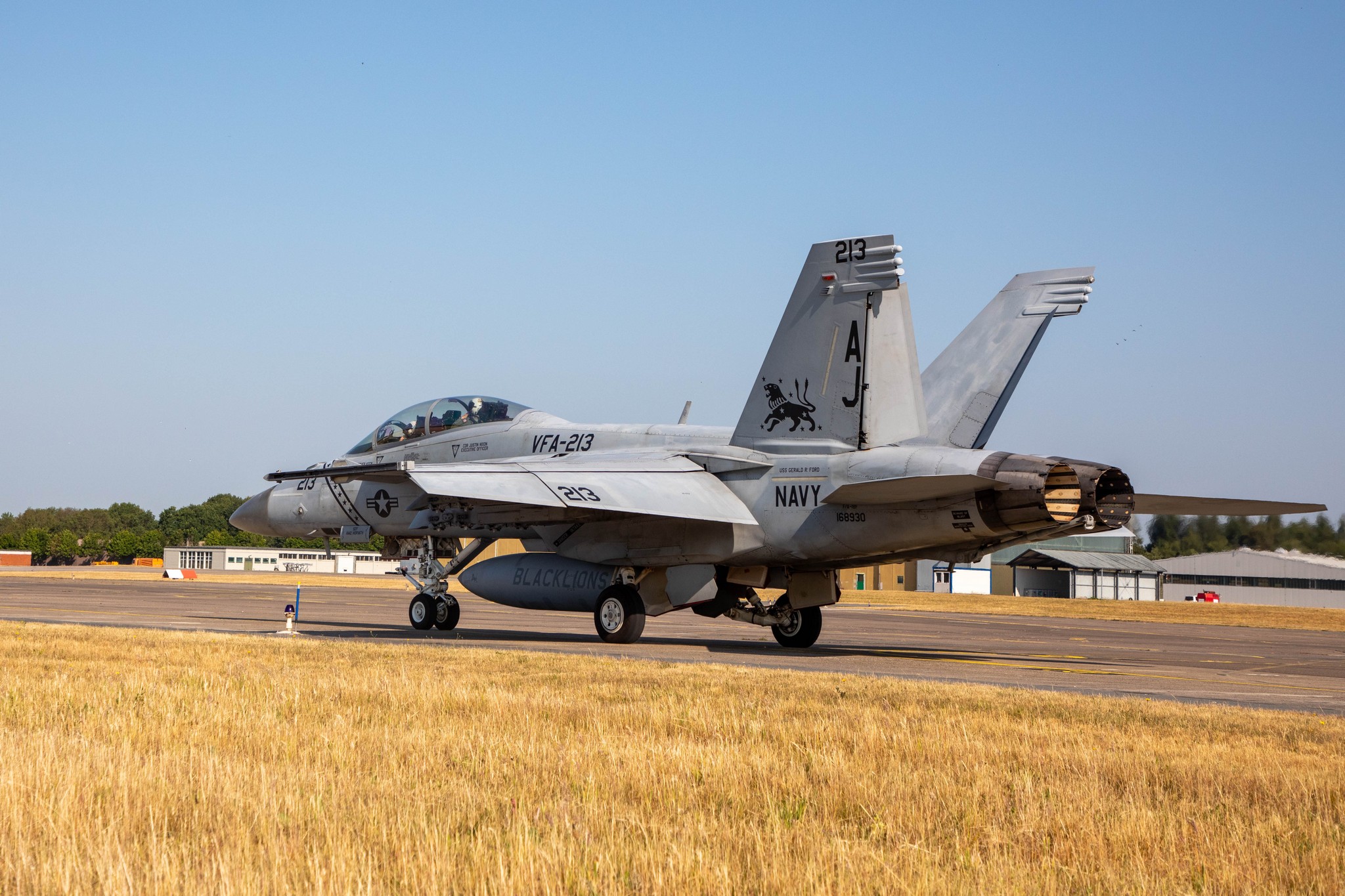
- 13Jun2023, Eastern Atlantic Ocean;
- 14Jun2023, Bay of Biscay 15Jun2023, transited the Strait of Gibraltar, in-chopped Mediterranean Sea;
- 15Jun-17Jun2023, Western Mediterranean Sea;
- 18Jun-l9Jun2023, Ionian Sea;
- 20Jun-25Jun2023, Adriatic Sea;
- 26Jun-29Jun2023, anchored off the coast of Split, Croatia;
- 30Jun-07Jul2023, Adriatic Sea;
- 08Jul-10Jul2023, Ionian Sea;
- 11Jul-22Jul 2023, Adriatic Sea;
- 23Jul-24Jul2023, Ionian Sea;
- 25Jul-26Jul2023, Saronic Gulf;
- 27Jul-30Jul2023, anchored in Phaleron Bay, off the coast of Piraeus, Greece;
- 31Jul2023, Saronic Gulf, Greece;
- 01Aug2023, South-West of Crete, Greece;
- 02Aug-11Aug2023, central Mediterranean, Exercise Sage Wolverine – Ships from multinational NATO Maritime Group 2 (SNMG2) participated in a series of maritime training exercises alongside the world’s largest aircraft carrier, the USS Gerald R. Ford during Exercise Sage Wolverine in the Mediterranean Sea. From 2 August to 11 August, Allied forces from Greece, Italy, Turkey, the United Kingdom and the United States honed their skills in maritime warfighting and seamless interoperability.
- 09Aug-18Aug2023, Adriatic Sea, Large Scale Exercise 2023 (LSE2023), a live, virtual, and constructive, globally integrated exercise designed to refine the synchronization of U.S. Navy and U.S. Marine Corps maritime operations, across six maritime component commands, seven numbered fleets, and 22 time zones. More than 10,000 Sailors and Marines participated in LSE2023, one of the maritime service’s largest exercises.
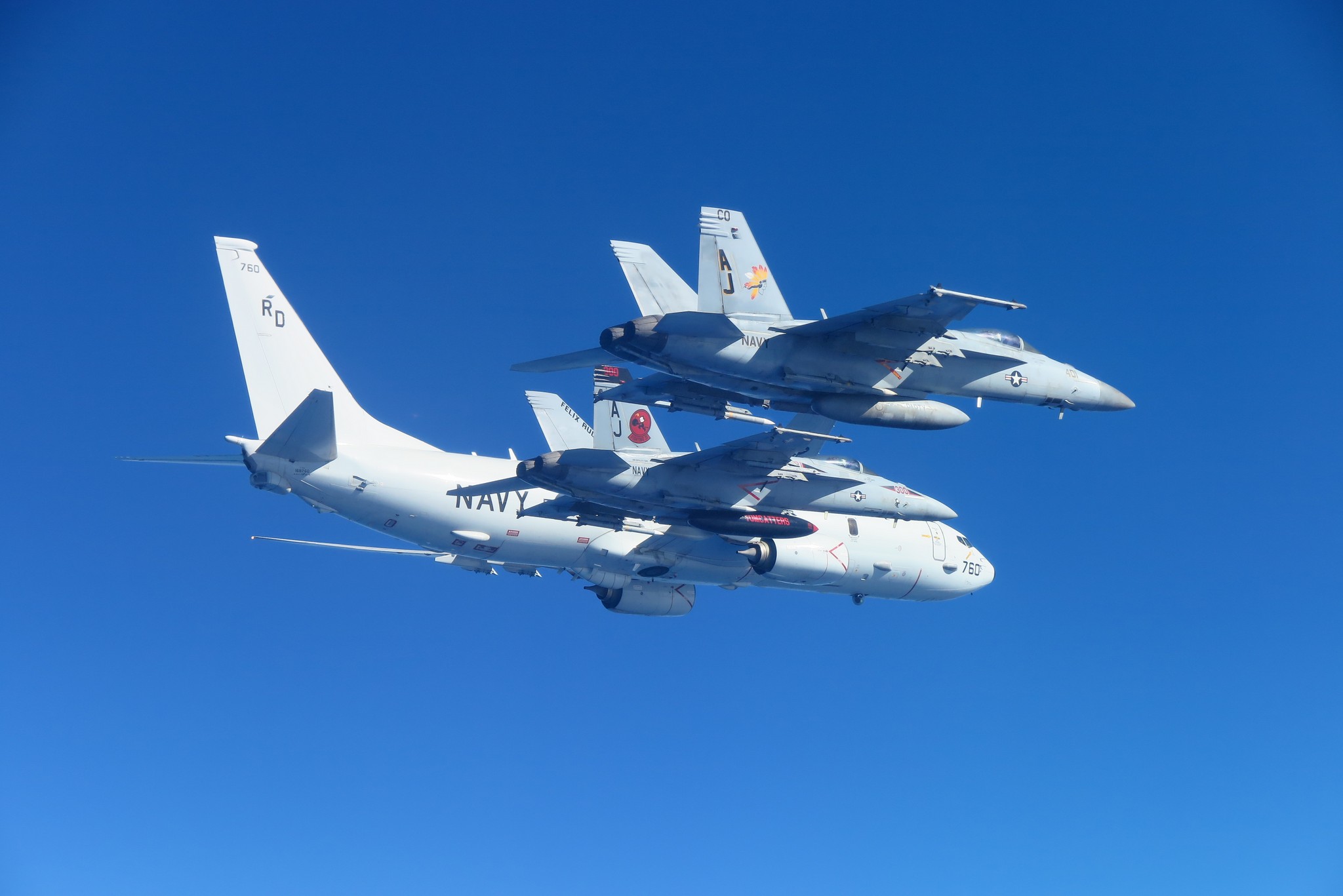 (U.S. Navy photo)
(U.S. Navy photo)
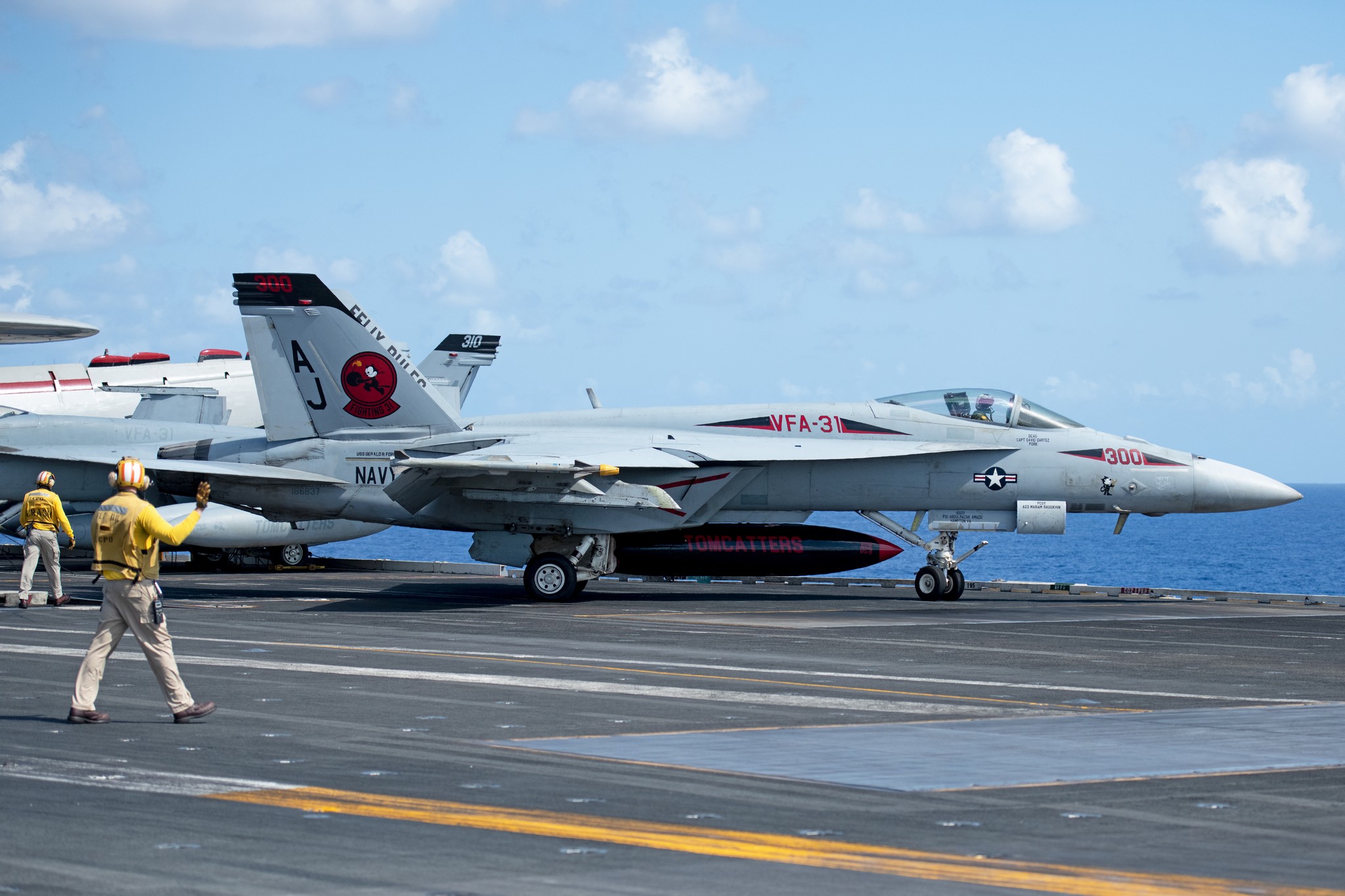
FA-18E 168837 /AJ300 VFA-31 (Patrick Roegies photo)
USS Gerald R. Ford (CVN 78) Fact Sheet
Background
USS Gerald R. Ford (CVN 78) is the U.S. Navy’s newest aircraft carrier, and is the flag ship of the Gerald R. Ford Carrier Strike Group. As the first-in-class ship for the next generation of aircraft carriers, Ford introduces 23 technologies to deliver greater lethality, survivability and joint interoperability while reducing operating and maintenance costs. CVN 78 is the first new carrier designed in over 40 years, and it was designed to have the flexibility to operate with future generations of aircraft.
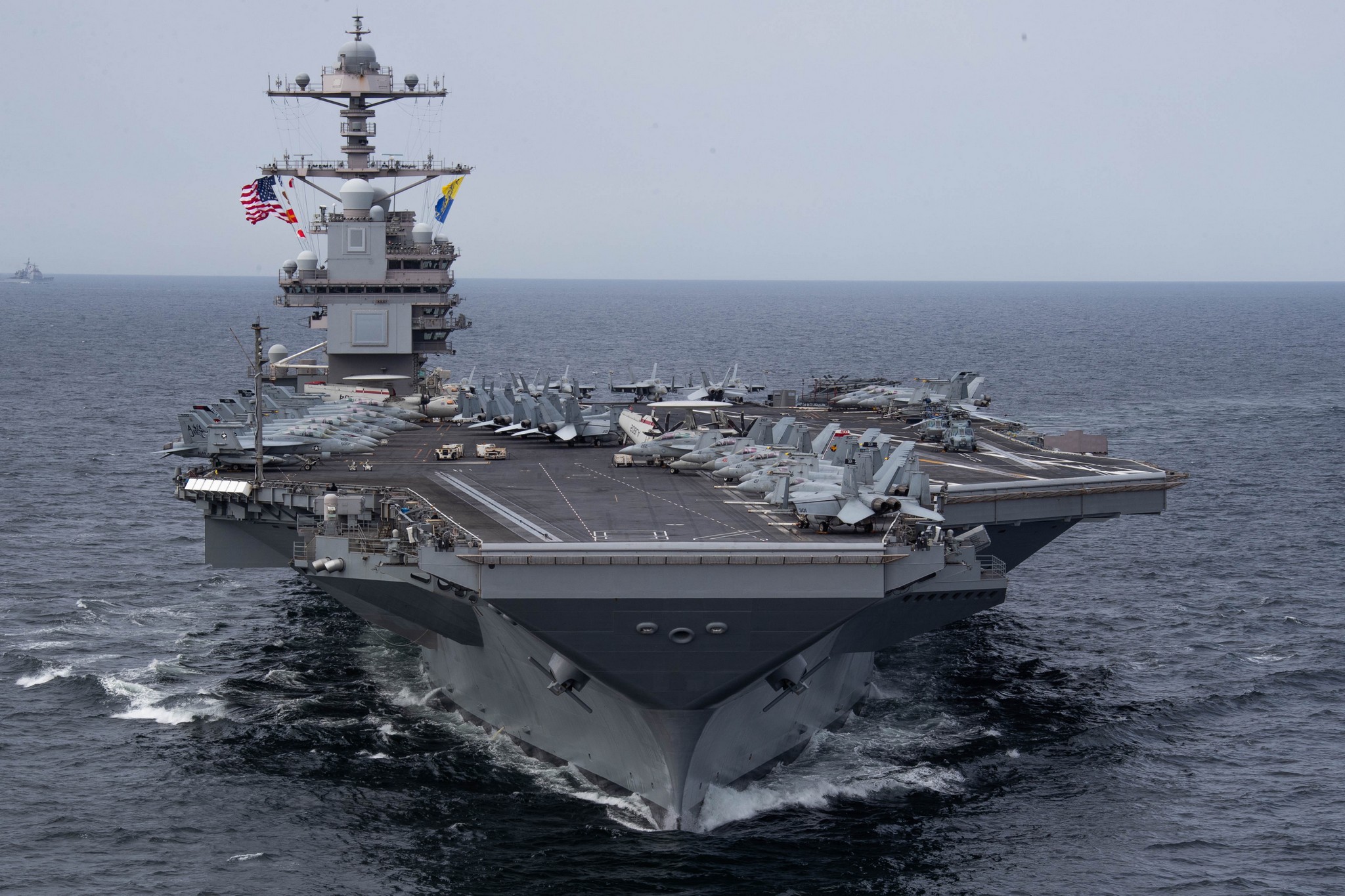
Ship’s namesake
Born in 1913, Gerald R. Ford grew up in Grand Rapids, Michigan, and earned the rank of Eagle Scout, the Boy Scout’s highest rank. He attended the University of Michigan at Ann Arbor, where he became a star football player for the Wolverines, with opportunities to pursue professional football. Instead, he chose the legal profession and went to Yale Law School, earning a Bachelor of Law degree in 1941.
Naval Service
Following the attack on Pearl Harbor, Ford joined the U.S. aval Reserve and was assigned to USS Monterey (CVL-26). In 1943, he was sent to the South Pacific and took part in the battles for Truk, Guam, Fom10sa, Marianas and the Philippines. He was honorably released from active duty in 1946 , having reached the rank of Lieutenant Commander.
After World War II, Ford returned to Grand Rapids and he returned to the law firm he started with Pat Buchanan. In 1948 he ran for congressional office and began tl1e first of 13 terms in the House of Representatives. As a congressman, Ford developed a reputation for integrity and the ability to work with both Republicans and Democrats.
President
Gerald R. Ford became Vice President of the United States in 1973 following tl1c resignation of Vice President Spiro Agnew. On Aug. 9, 1974, Ford became President following the resignation of President Nixon during tl1e Watergate scandal.
As President, Ford strove to bring unity to a nation disillusioned by the Watergate scandal, Vietnam War and an economic recession. Ford’s legacy is one of a man who placed service above self, and who served the nation with the highest level of personal integrity.
Background
The USS Gerald R. Ford (CVN 78) is a first-in-class aircraft carrier, and the fast new aircraft carrier designed in over 40 years. The Sailors who serve aboard Ford are tasked with ensuring tl1e ship is able to execute national tasking for decades to come.
Although it appears similar to a Nimitz-class aircraft carrier, there are many features tl1at make Ford unique. First-in-class technology includes a new nuclear plant, tl1c ability to generate nearly three times the amount of electrical power, innovative advanced arresting gear and the electromagnetic aircraft launch system (EMALS).
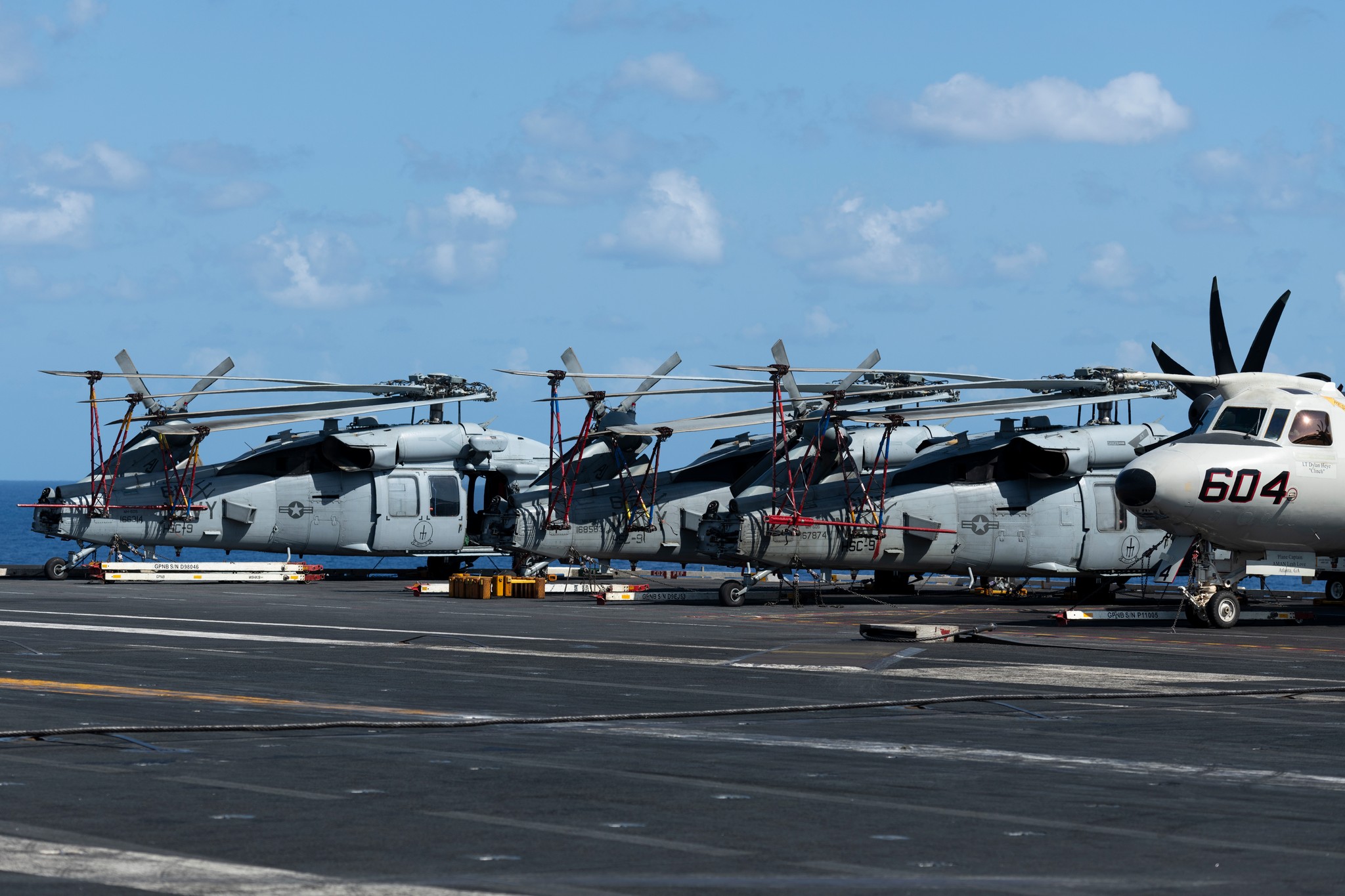
(Patrick Roegies photo)
Direct comparison between Nimitz and Ford Classes
Nimitz Class
- Steam catapult system
- Three hangar bays and four aircraft elevators
- Fueling stations only on flight deck catwalks
- Weapons elevators have a conveyor belt system
Ford Class
- Electromagnetic Aircraft Launch System (EMALS)
- Two hangar bays and three aircraft elevators
- In-deck fueling stations on flight deck
- Only ship with advanced weapons/ stores elevators
- Advanced Arresting Gear (AAG)
- Dual-Band Radar (DBR)
- Island is smaller and further aft on the flight deck
EMALS replaces the steam catapult system traditionally used to launch aircraft and will expand the aircraft launch envelope, paving the way for innovations in manned/ unmanned aircraft as well as providing tl1e opportunity for other technological advancements in the future.
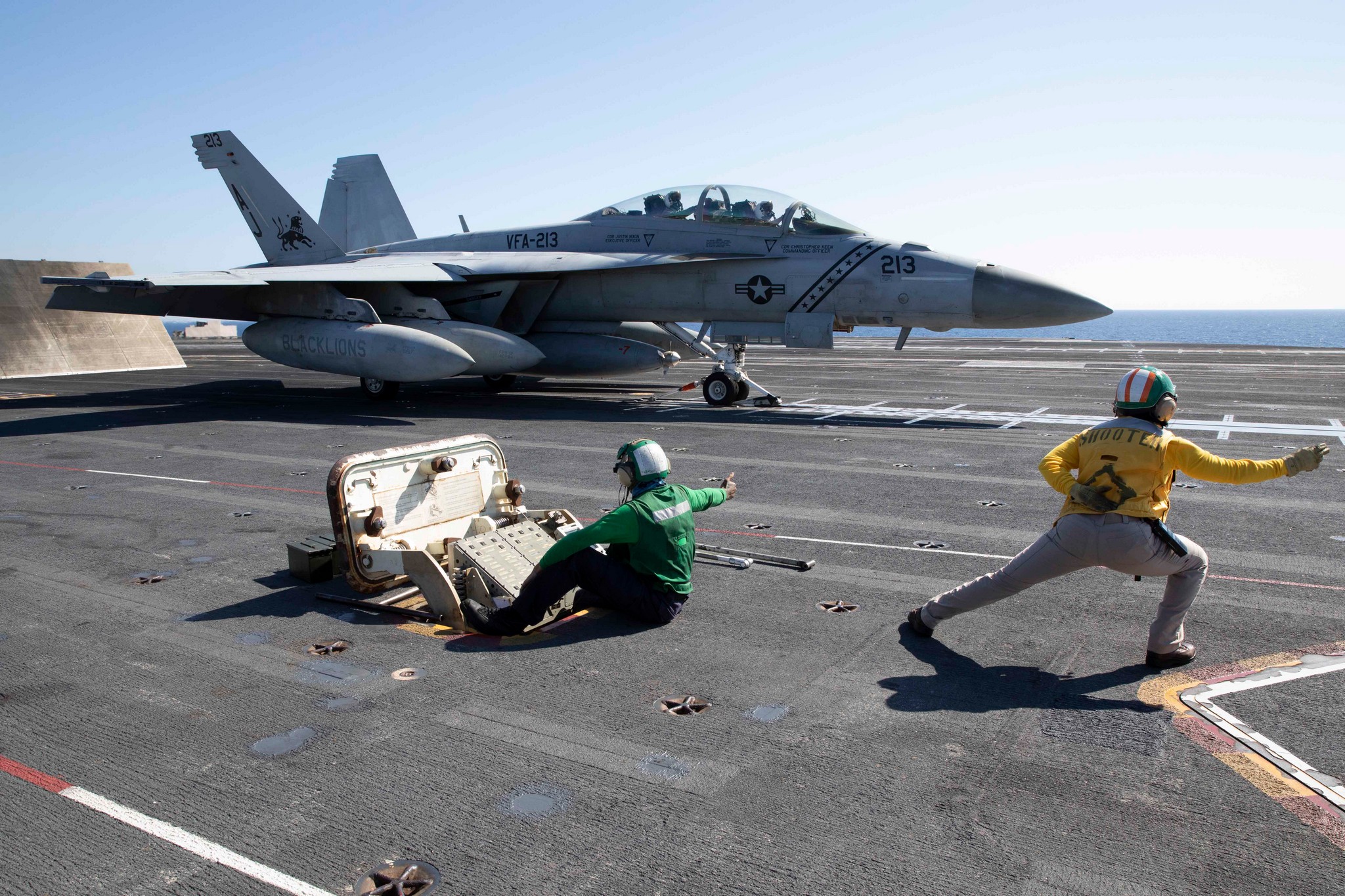
Features
- Keel Laid: November 2009
- Christening: November 9, 2013
- Propulsion: Two nuclear reactors, four shafts
- Length: 1,092 feet
- Beam: 134 feet,
- Flight Deck Width: 256 feet
- Displacement: Approximately 100,000 long tons full load
- Speed: 30+ knots (34.5+ miles per hour)
- Builder: Huntington Ingalls Industries Newport News Shipbuilding
- Ship’s Sponsor: Susan Ford Bales, daughter of Gerald R. Ford
- Crew: 4,539 (ship, air wing and staff); 2,700 (ship’s company)
- Armament: Evolved Sea Sparrow Missile, Rolling Airframe Missile, Close-in Weapons System (CIWS)
- Aircraft: 75+
Technologies Introduced to Ford-Class
- Advanced Arresting Gear (AAG)
- Electromagnetic Aircraft Launch System (EMALS)
- Dual Band Radar (DBR)
- Advanced Weapons Elevators (AWE) and Vertically Integrated Stores Elevators
- Propulsion Plants
- Zonal Electrical Distribution System (ZEDS)
- Electrical Power Distribution System (400 HZ Static Frequency Converters)
- All Electric Auxiliary Systems
- Machinery Control and Monitoring Systems (MCMS)
- Combat Systems Local Area Network (CSLAN)
- Consolidated Afloat Network and Enterprise Services (CANES)
- Ships Self Defense System (SSDS)
- Steering and Hydraulic Control Systems
- Navigation Network
- Heavy Underway Replenishment
- JP-5 (carrier jet fuel) Fuel Handling and Storage
- Jet Blast Deflectors (JBD)
- Aviation Electrical Servicing System (AESS)
- Aircraft Elevators, automatic deck stanchions and associated support systems
- CVN 78 Video Distribution System
- Hangar Bay Conflagration Monitoring Station
- Drainage and Ballast System
- Magazine Sprinkling
- Plasma Arc Waste Destruction System
Flight Deck (Largest and most advanced flight deck in the fleet)
- EMALS — Upgraded from steam catapults, EMALS on Ford-class uses stored kinetic energy and solid-state electrical power conversion to launch aircraft, permitting a high degree of computer control, monitoring and automation. EMALS improves takeoff speed while reducing wear on aircraft. Reduces cost for maintenance and support. Reduces personnel required to operate by one third. Allows for quieter and cooler work and living spaces for Sailors. Can launch aircraft every 30 seconds (60 seconds on average to include reload time).
- AAG — Recovers a greater range of aircraft and limits the impact load on aircraft.
- Electromechanical Actuators (EMA) — For jet blast deflectors and barricade stanchion.
- Length — 1,092 ft. (more than 3.5 football fields)
- Width — 256 ft.
- Island Placement — 140 feet further aft from Nimitz-class carriers, increasing efficacy, creating more “real estate” on the flight deck to launch and recover aircraft.
- In-Deck Fueling — Ford-class has the ability to refuel jets from the center of the flight deck, improving the ship’s ability to reload and relaunch aircraft.
TAC numbers “Bullseyes”
- Frame number: Frames run the length of the ship and indicate how far forward or aft you are, starting at frame O (bow) and ending at frame 265 (stem). Spaces forward of the bow are labeled with frame letters A-L.
- Deck number: The Hangar Bay serves as the main deck (1). From there, the numbers increase the further away you get. An ” O” is added to levels above the hangar bay.
- Port/Starboard: if a number is odd, you are on the ship’s starboard side. If a number is even, you are on the ship’s port side. A higher number indicates that you are farther outboard from the center of the ship.
- Space Use: The specific use of a space is indicated by the assigned letters:
- A – Dry Storage
- C- Control Spaces
- L – Living Spaces
- M – Ammunition
- Q – Offices
- T – Vertical Access
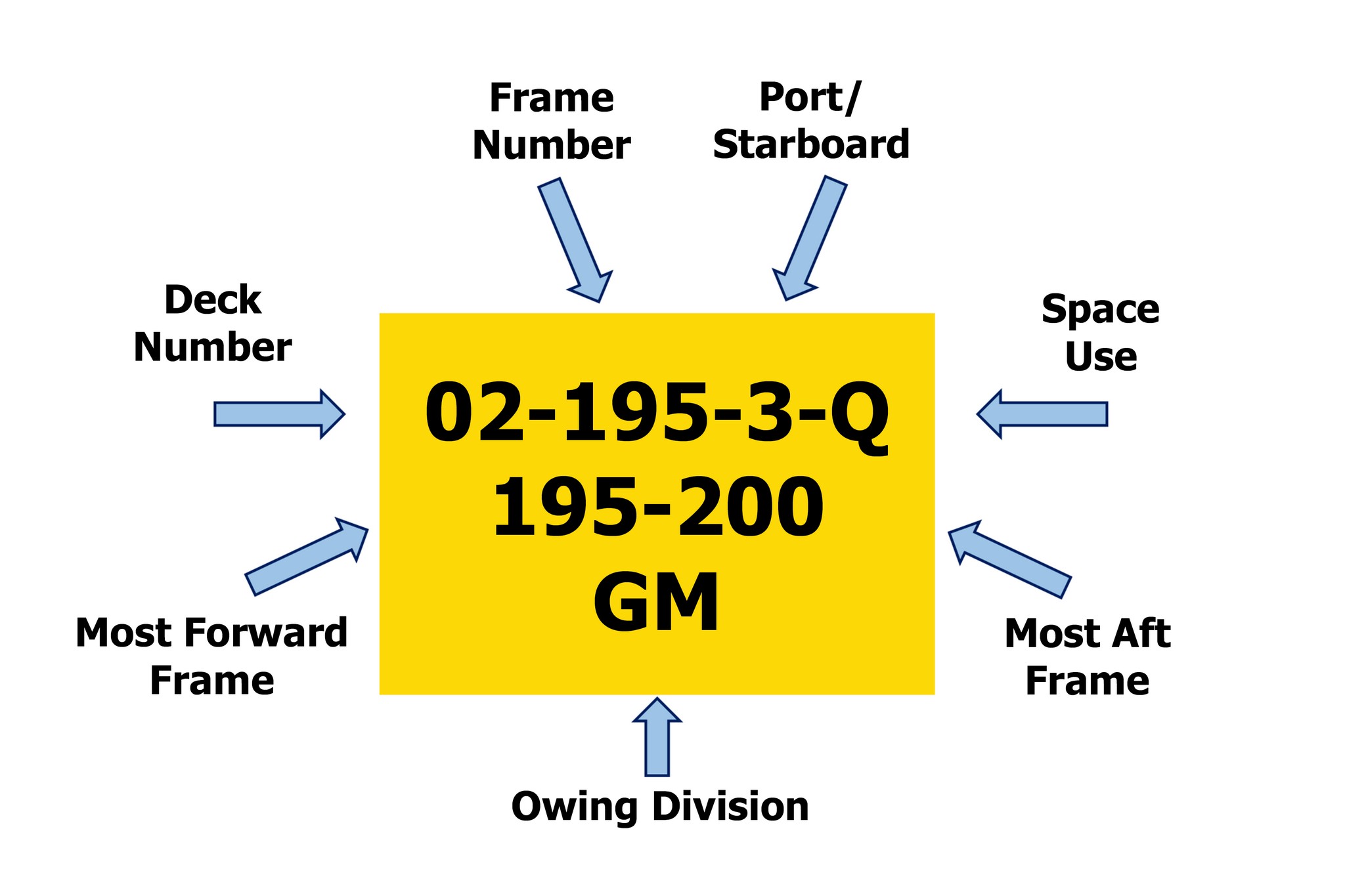
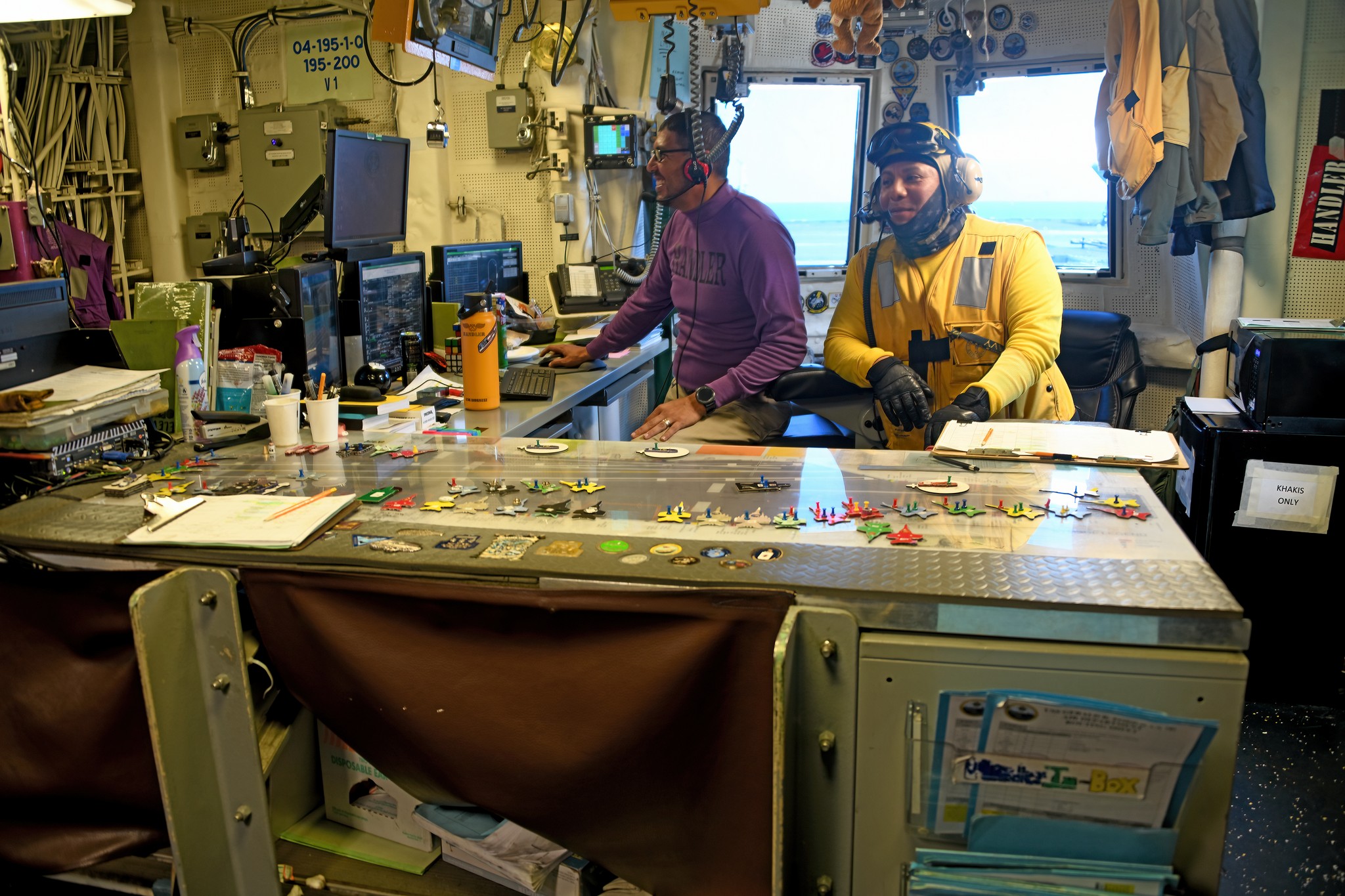 Inside the Flight Deck Control (Angelo Romano photo)
Inside the Flight Deck Control (Angelo Romano photo)
Electrical Power Distribution System
Generates nearly three times the amount of electrical power from Nimitz-class.
Advanced Weapons Elevators (AWE)
AWE moves more ordnance faster and requires less maintenance and personnel to operate. Ford has 11 weapons elevators with 4 upper stage elevators and 7 lower stage, enhancing the ship’s ability to move 24,000 pounds per load at a speed greater than Nimitz-class carriers.
Plasma Arc Waste Destruction System (PAWDS)
Efficiently processes shipboard waste in an environmentally responsible fashion in compliance with national and international laws, rules, regulations and standards. PAWDS burns an average of 2,500 to 3,000 pounds of trash on a normal day underway onboard Ford at 9,032 degrees Fahrenheit. With the use of PAWDS, 100 pounds of trash can be reduced to one pound of ash.
Dual Band Radar (DBR)
DBR is the primary radar for contacting aircraft. Its two functions are multifunction radar and volume
search radar, which together provides a complete 360-degree air picture around the ship.
Sage: a special dog Part of the first Expanded Operational Stress Control Canine Pilot Program
Sage, a three-year-old female yellow Labrador Retriever, is deployed aboard the aircraft carrier USS Gerald R. Ford (CVN 78), May 3, as part of the Expanded Operational Stress Control Canine pilot program.
This innovative program is aimed at providing a unique outlet and comfort for Sailors during deployment, with the goal of helping them cope with the operational stress associated with their work.
Sage is part of the warfighter toughness mental health and resiliency team on the Gerald R. Ford and is specially trained to help Sailors deal with the challenges of deployment. Animals have been proven to be an effective form of stress relief and can provide a sense of companionship, which is why Sage is expected to be an invaluable asset to the crew during their deployment.
 Sage CVN 78 mascotte (Angelo Romano photo)
Sage CVN 78 mascotte (Angelo Romano photo)
CARRIER STRIKE GROUP TWELVE “READY ON ARRIVAL”
RADM Erik Eslich
Commander, Carrier Strike Group Twelve (CSG-12)
Rear Adm. Eslich is a native of Fort Lauderdale, Florida. He earned a bachelor’s degree in economics from the United States Naval Academy in May 1993. He also earned a master’s degree in strategic studies from the Naval War College.
As a career surface warfare officer, he served tours aboard USS Lake Erie (CG 70), USS Wasp (LHD 1), USS Oscar Austin (DDG 79), and Commander, Cruiser Destroyer Group Eight. Eslich served as executive officer for both USS O’Kane (DDG 77) and USS Ramage (DDG 61) and he went on to command both USS Ramage and Destroyer Squadron Two (CDS 2), throughout which, he has made multiple deployments in support of training and real world operations.
Ashore, he served as a U.S. House of Representatives case officer, Office of Legislative Affairs; executive assistant to Commander, Naval Surface Force Atlantic; global requirements officer at the Joint Integrated Air and Missile Defense Organization (JIAMDO); surface warfare community manager at the Bureau of Navy Personnel (BUPERS-3); and as executive assistant to the Deputy Commander and Commander at U.S. Fleet Forces Command; and Deputy Commander at Seventh Fleet.
Eslich’s personal decorations include the Legion of Merit, Defense Meritorious Service Medal, Navy Meritorious Service Medal, Navy and Marine Corps Commendation Medal, Navy and Marine Corps Achievement Medal, and various campaign and service medals and ribbons.
Eslich began serving as Commander, Carrier Strike Group Twelve, in May 2023.
CAPT Richard G. Burgess
Commanding Officer
USS Gerald R. Ford (CVN 78)
Capt. Rick Burgess, a native of Bellevue, WA, graduated from the U.S. Naval Academy in 1996 with a Bachelor of Science in Political Science and was designated a Naval Flight Officer in 1998.
Operational assignments include tours with Fighter Squadron (VF) 31, USS Abraham Lincoln (CVN 72); Strike Fighter Squadron (VFA) 102, USS Kitty Hawk (CV 63); and two tours with VFA-103, USS Dwight D. Eisenhower (CVN 69) and USS George Washington (CVN 73).
Shore assignments include service as Action Officer in the House Liaison Office, Office of Legislative Affairs (OLA); TOPGUN Instructor with Navy Fighter Weapons School; Strike Fighter Placement Officer (PERS-433B) with Navy Personnel Command (NPC); Branch Chief, Global Missile Defense Requirements at Joint Integrated Air and Missile Defense Organization (JIAMDO), the Joint Staff (J8); and Homeland Defense Technologies Project Lead with The Johns Hopkins University Applied Physics Laboratory (APL).
He completed the Air Command and Staff College Non-Resident Program, earned a Master of Arts in National Security and Strategic Studies from Naval War College, and has a graduate certificate in Nuclear Engineering from Naval Postgraduate School.
He commanded VFA-103, The Jolly Rogers, from July 2013 to November 2014; served as Executive Officer of USS George H. W. Bush (CVN 77) from June 2019 to December 2020; and commanded the nation’s first Expeditionary Sea Base, USS Lewis B. Puller (ESB 3), from May 2021 to August 2022.
Burgess has flown more than 3,500 hours in the F-14, F-15, F-16, and F/A-18. His personal decorations include the Legion of Merit, Defense Meritorious Service Medal, Meritorious Service Medal, and various individual and unit campaign awards.
CAPT Dan S. Catlin
Commander Air Wing (CAG) EIGHT (CVW-8)
Capt. Dan “OJ” Catlin is a native of La Porte, Texas. He was commissioned as a Second Lieutenant in the United States Air Force after graduating from the United States Air Force Academy in 1999 with a Bachelor of Science in International Relations. He was designated a naval aviator in May 2003 after completing an inter-service transfer to the United States Navy.
Catlin’s fleet assignments include operational tours with the “Argonauts” of Strike Fighter Squadron (VFA) 147, the “Stingers” of VFA-113, and the “Sunliners” of VFA-81. During these assignments, he flew numerous combat missions in support of Operations Iraqi Freedom, Enduring Freedom, New Dawn, and Inherent Resolve. While in command of VFA-81, Catlin was recognized as the recipient of the 2016 Commander, Strike Fighter Wing Atlantic Navy and Marine Corps Association O-5 Leadership Award.
Shore duty assignments for Catlin include an instructor tour with the “Flying Eagles” of VFA-122, NATO Allied Maritime Command in Northwood, England, and command of the “Gladiators” of VFA-106. While assigned to the “Flying Eagles”, he served as a super hornet tactical demonstration team pilot and was the recipient of the 2008 Instructor Pilot of the Year Award. Following his first command tour, he earned a master’s degree in National Security Strategy from the prestigious National War College in Washington D.C.
Catlin has accumulated over 3,200 flight hours in various models of F/A-18 aircraft and over 750 arrested carrier landings. He humbly credits his various personal and unit awards to the outstanding men and women he has had the privilege of serving with throughout his career.
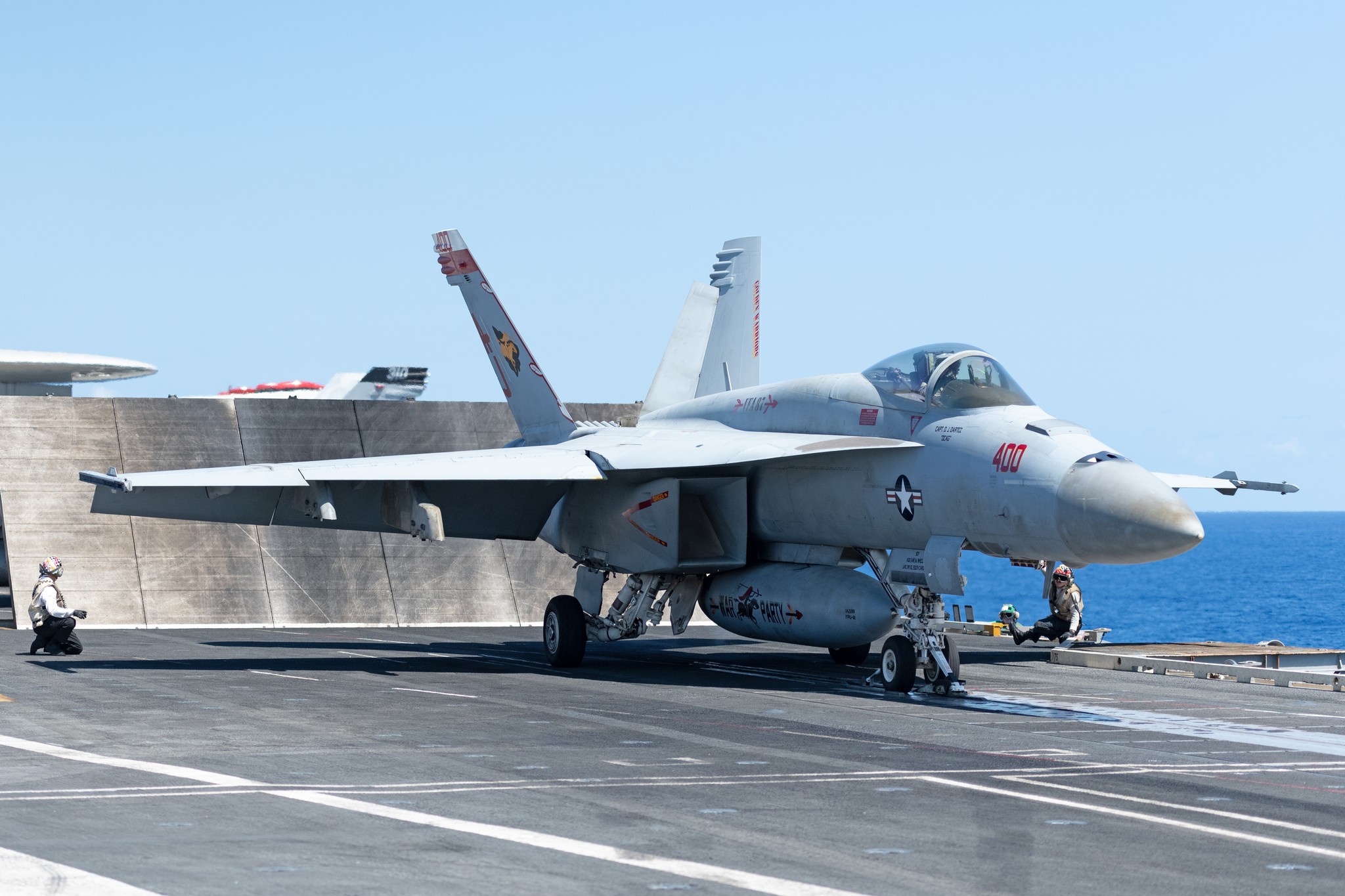
(U.S.Navy photo)
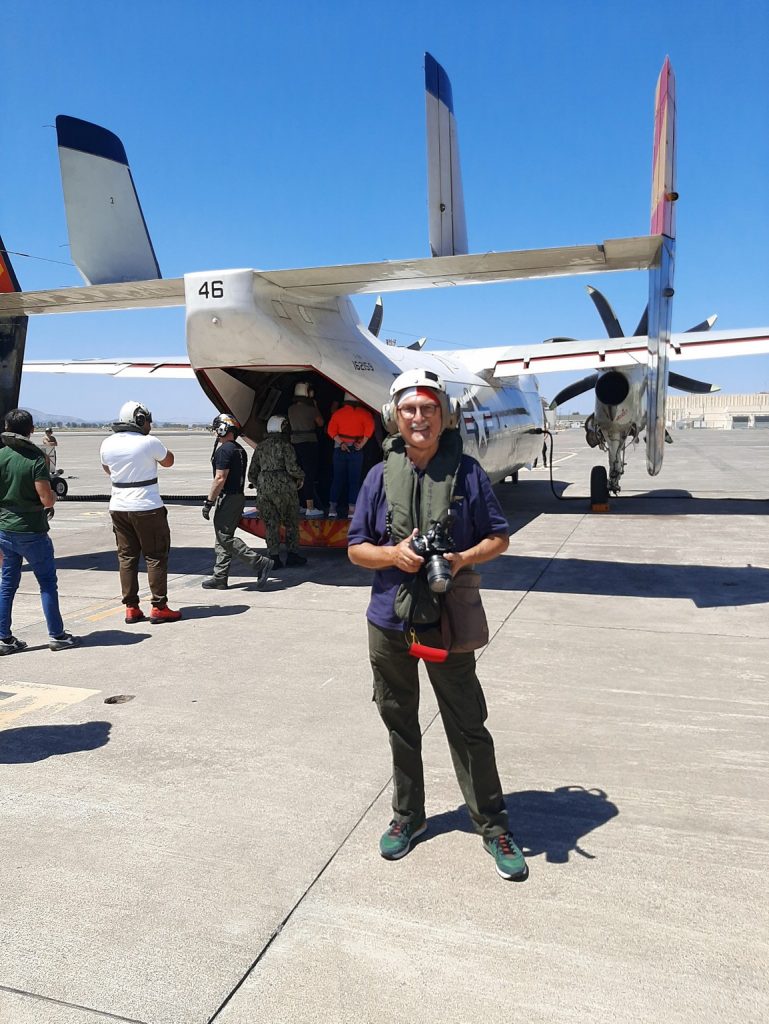
Angelo Romano
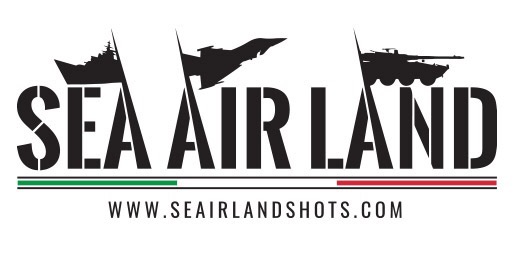 seairlandshots Reportages sulle forze Armate Italiane, Aeronautica Militare, Marina Militare, Esercito Italiano, Corpi Armati dello Stato, Polizia, Carabinieri ,Guardia di Finanza, Guardia Costiera
seairlandshots Reportages sulle forze Armate Italiane, Aeronautica Militare, Marina Militare, Esercito Italiano, Corpi Armati dello Stato, Polizia, Carabinieri ,Guardia di Finanza, Guardia Costiera
